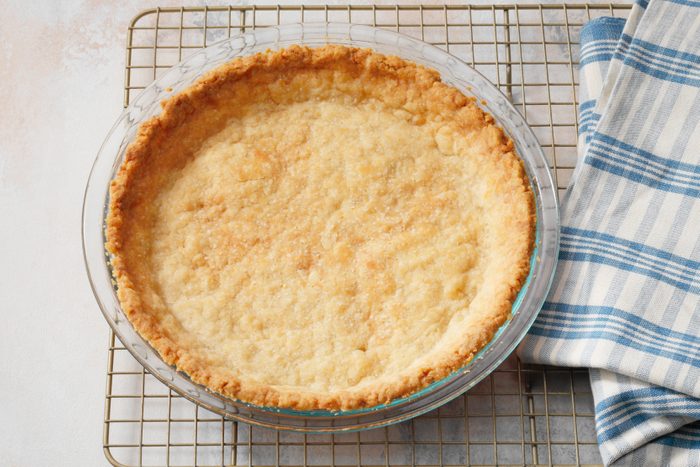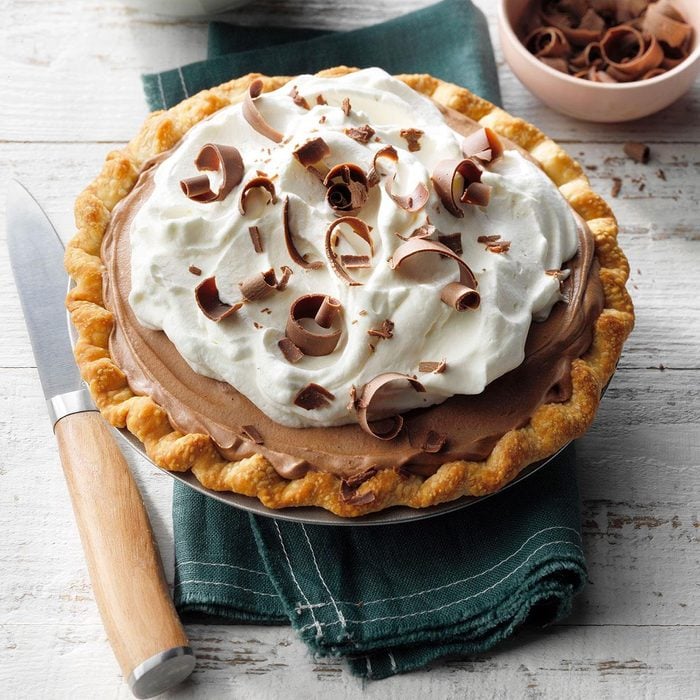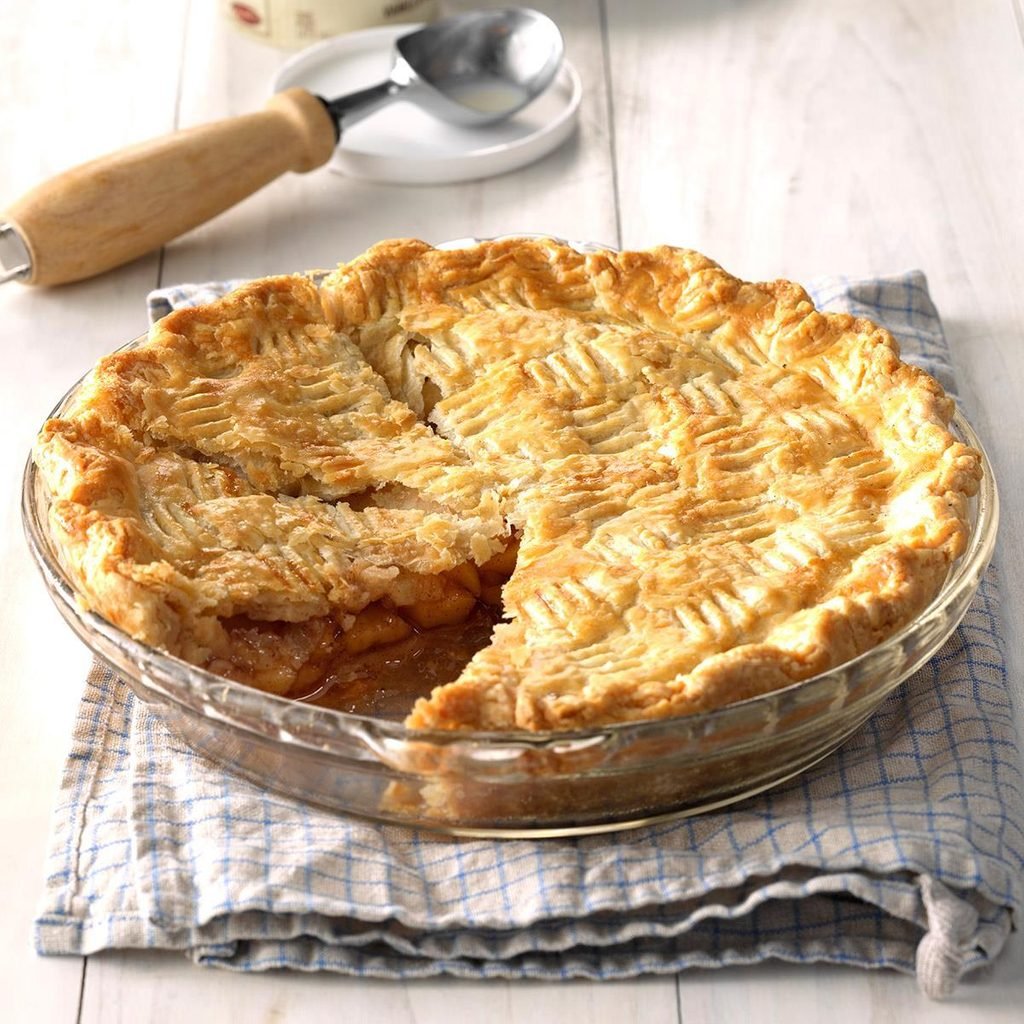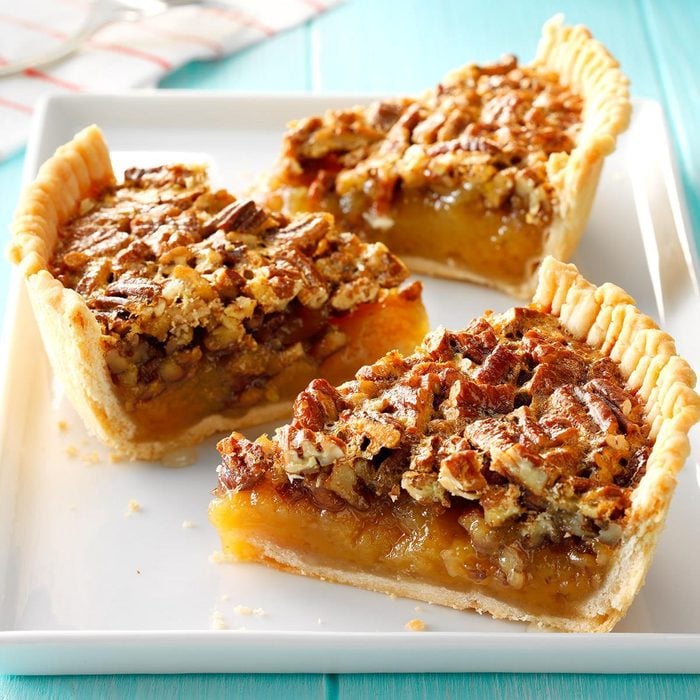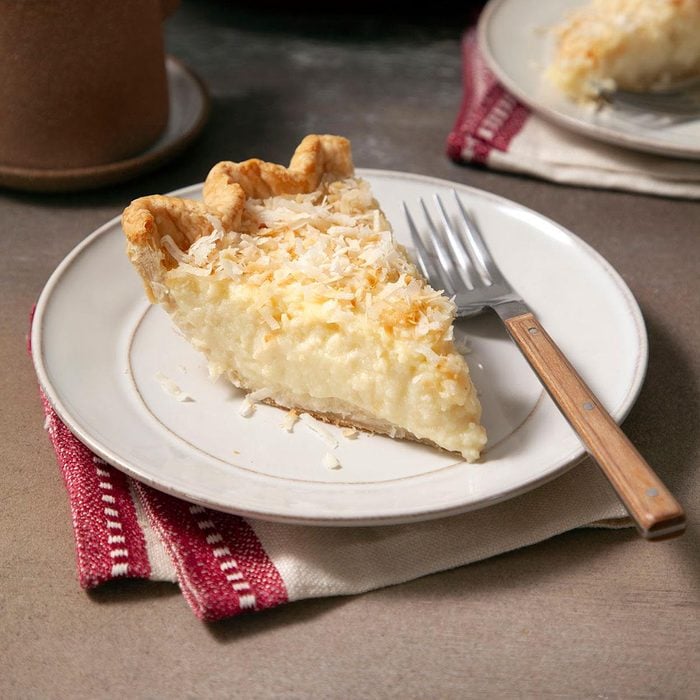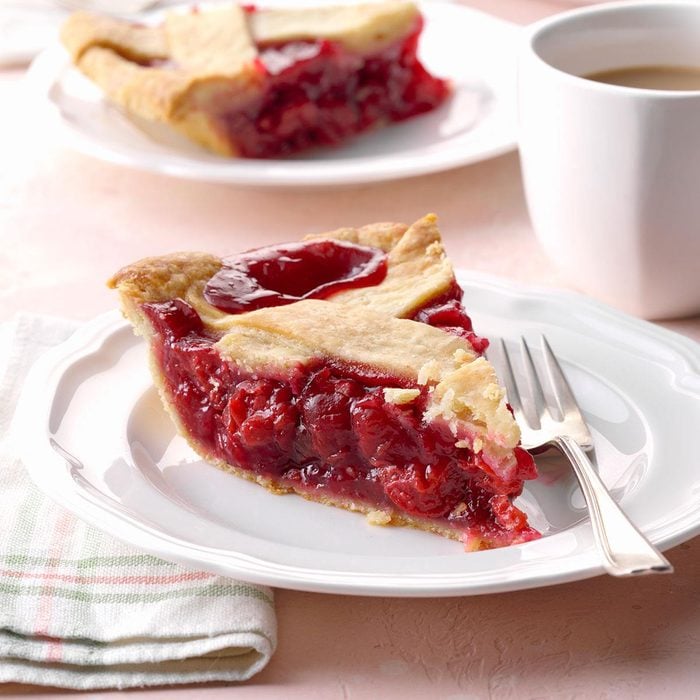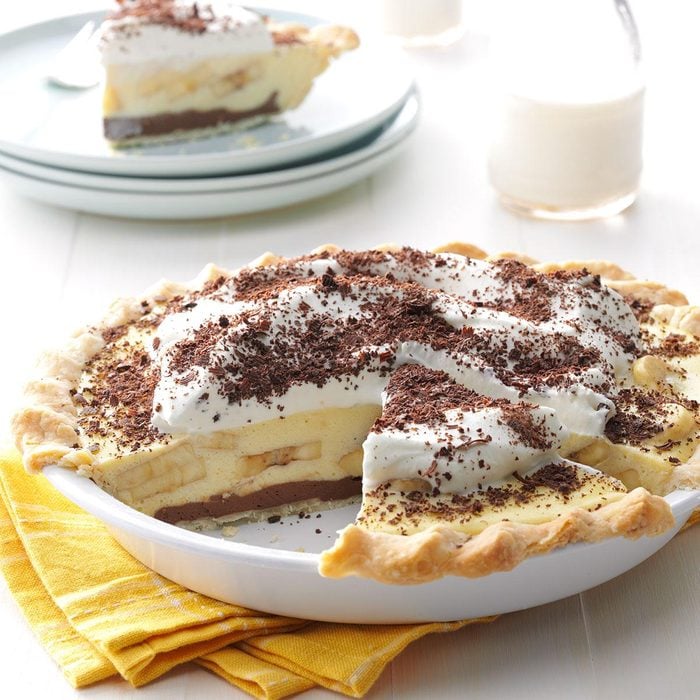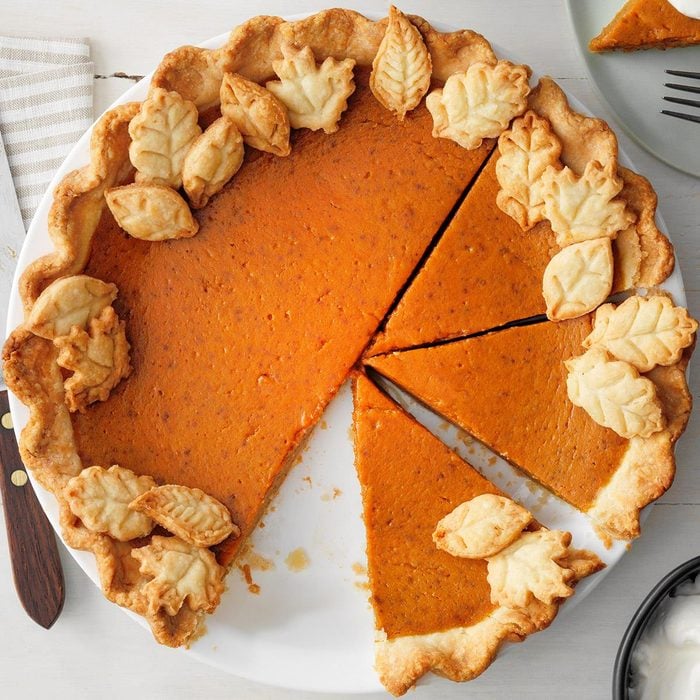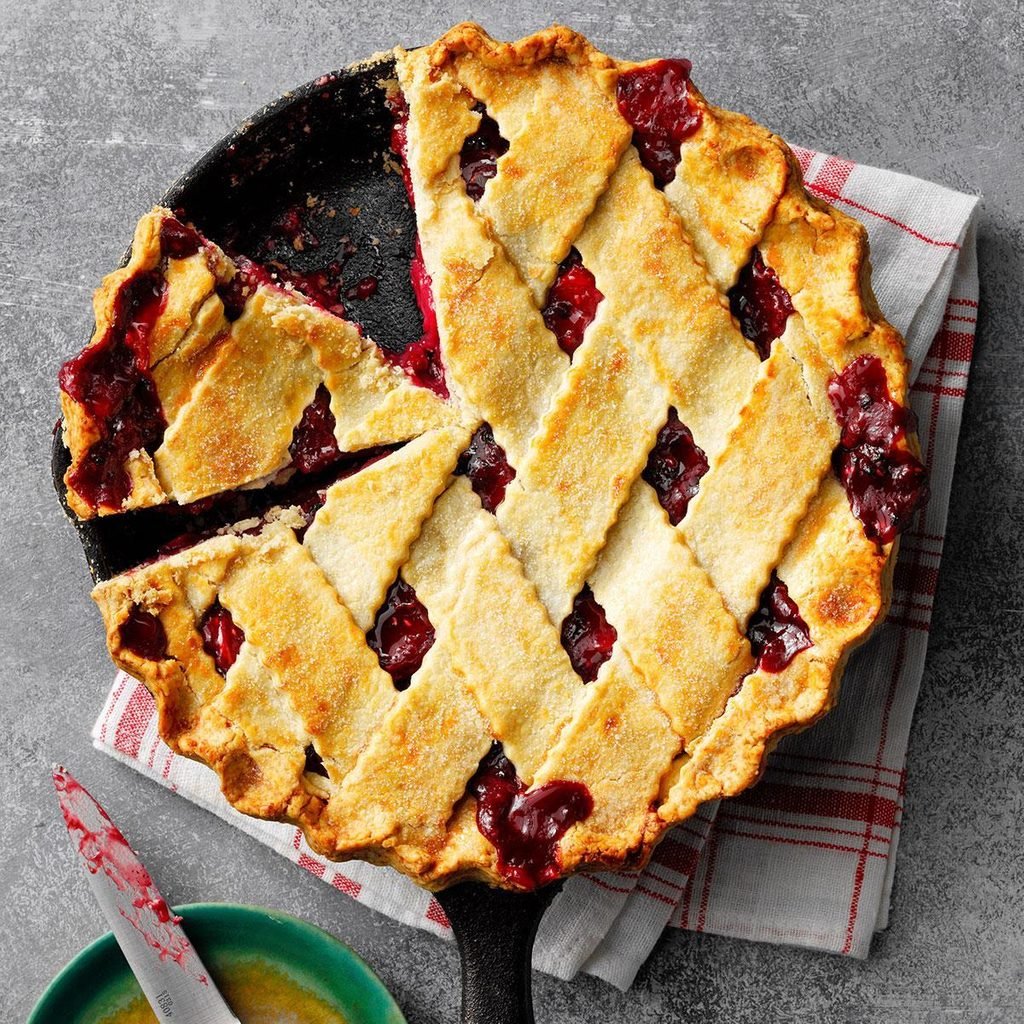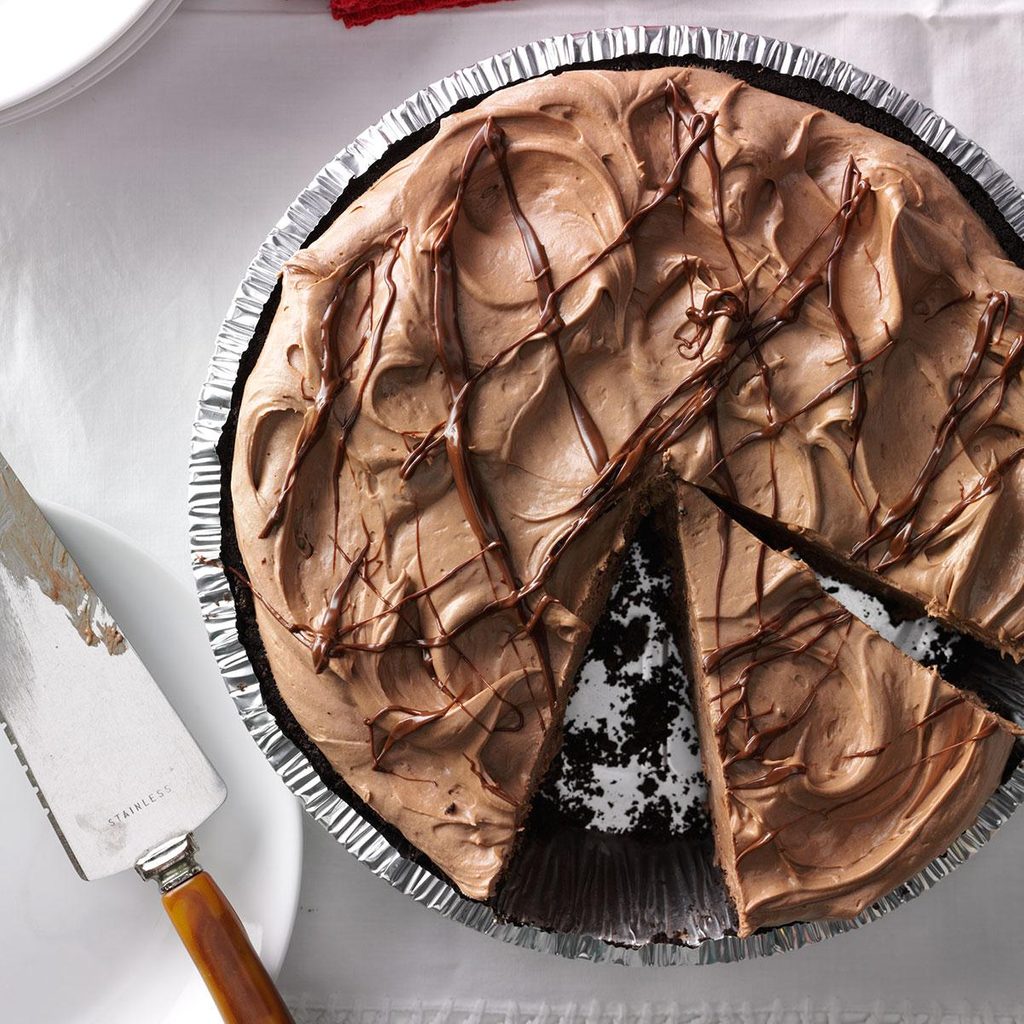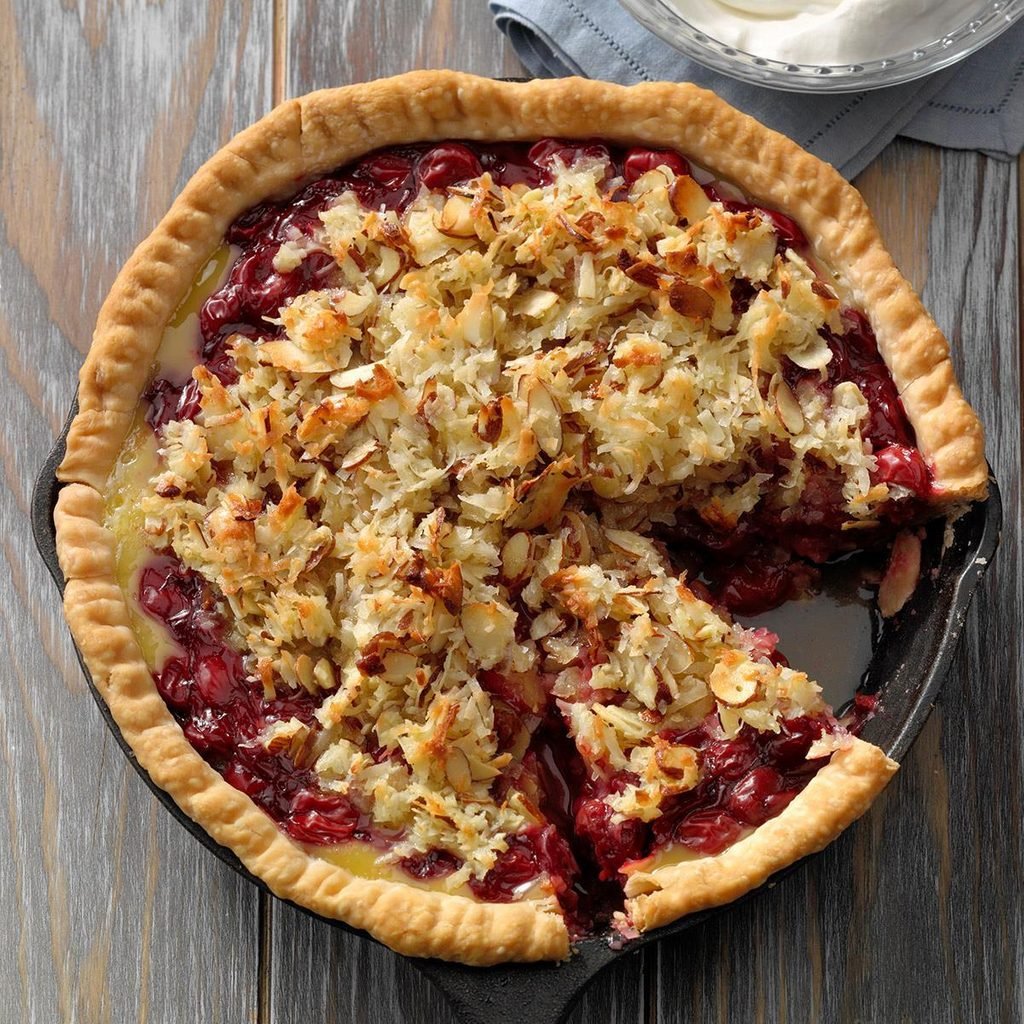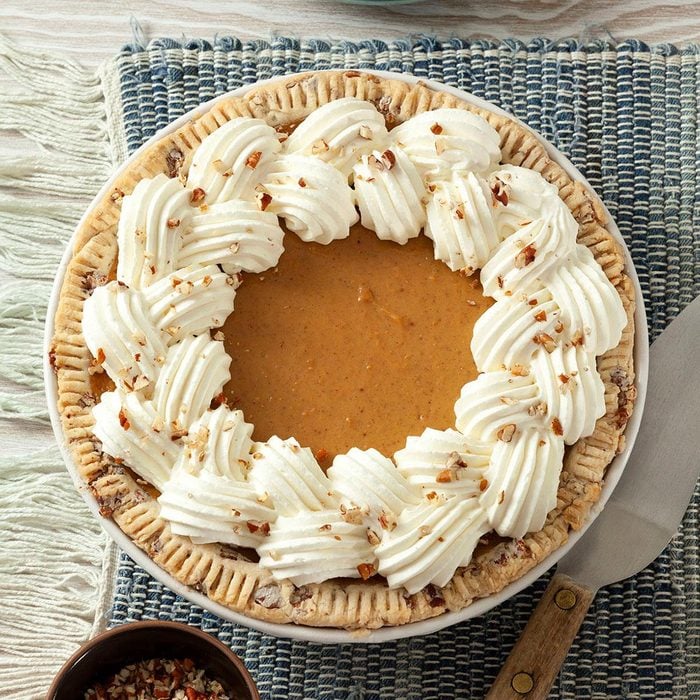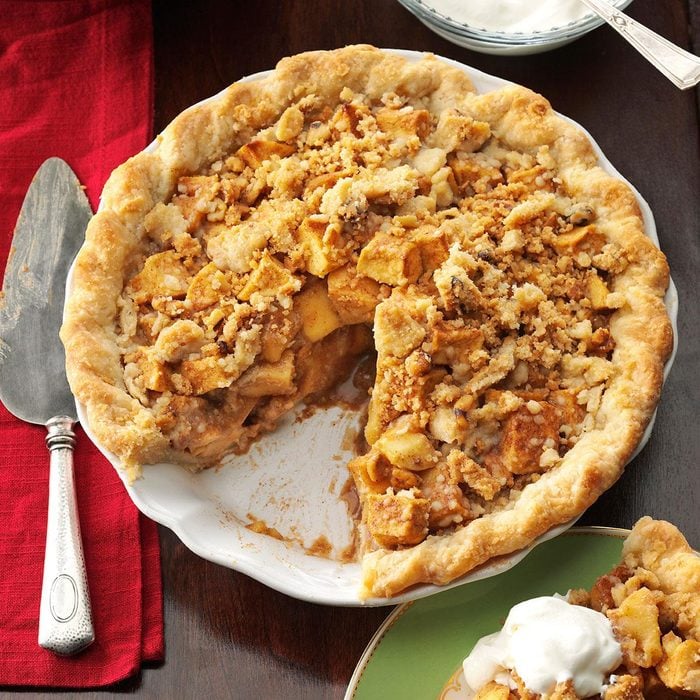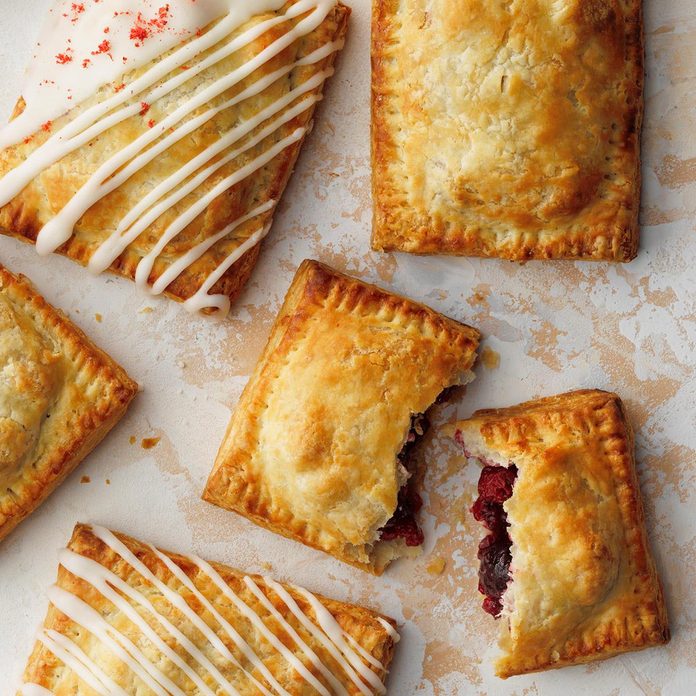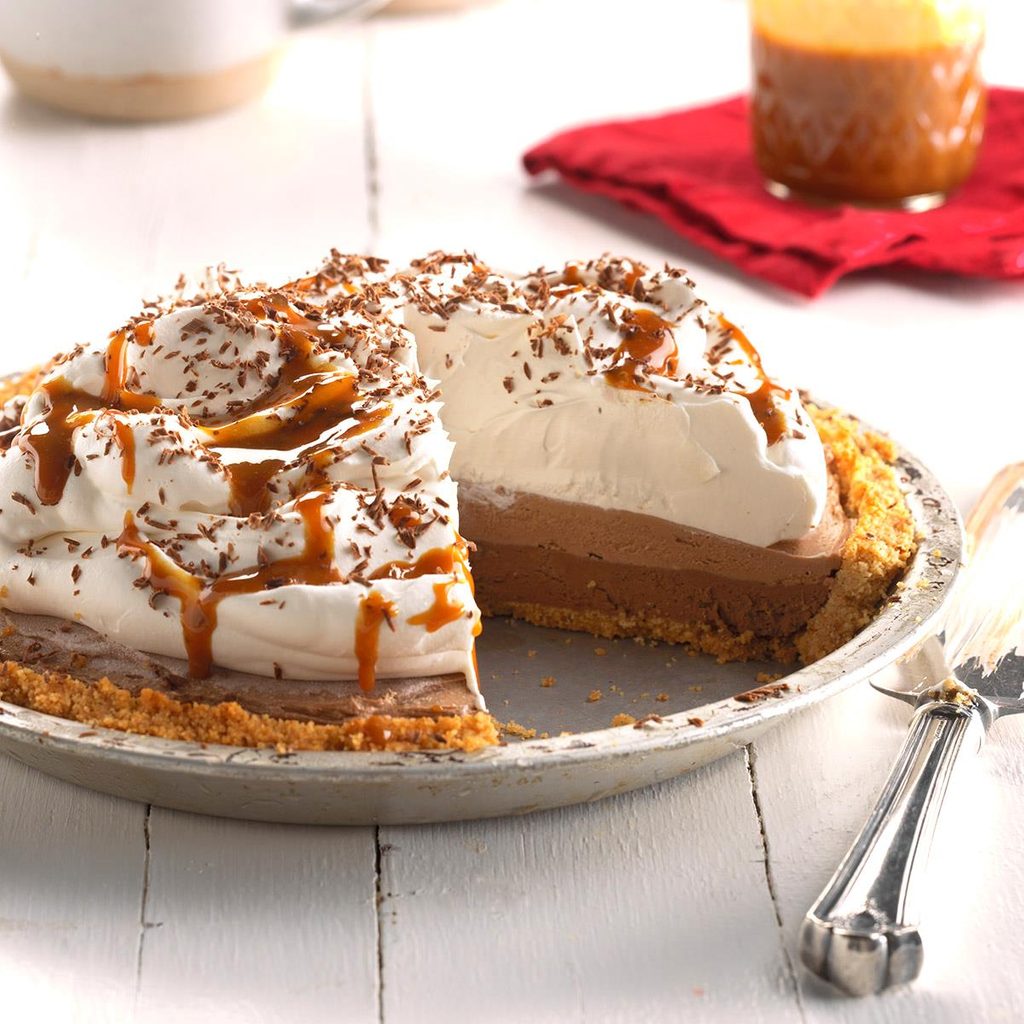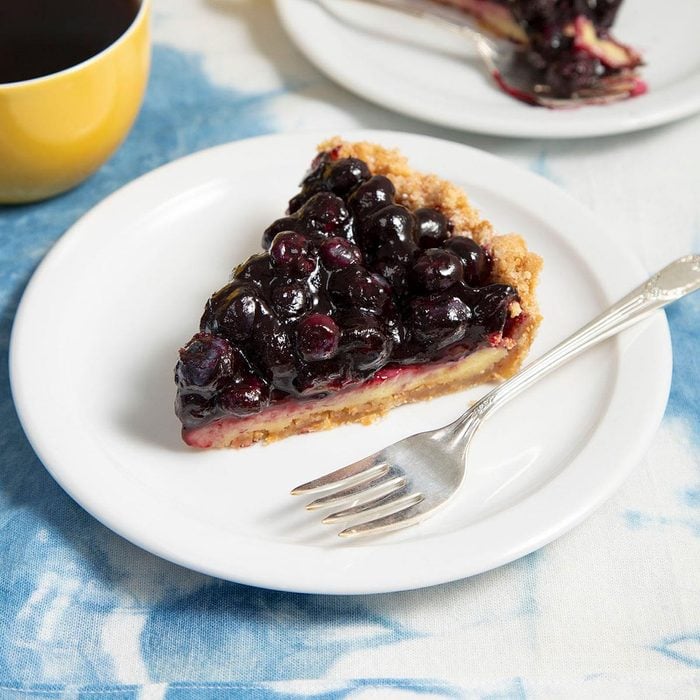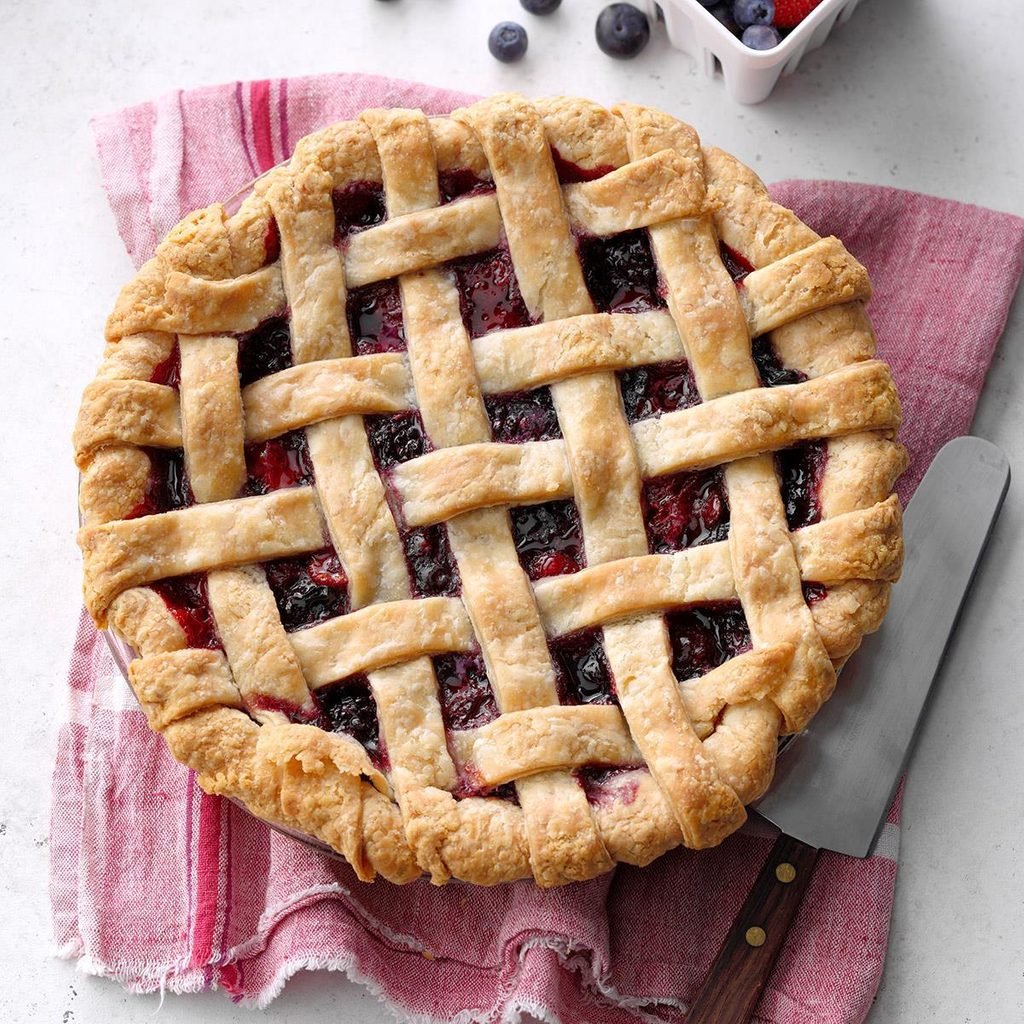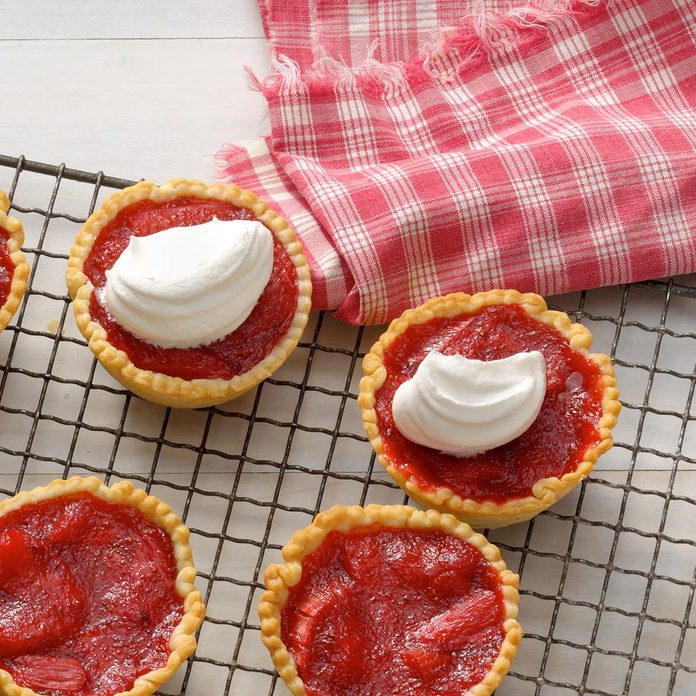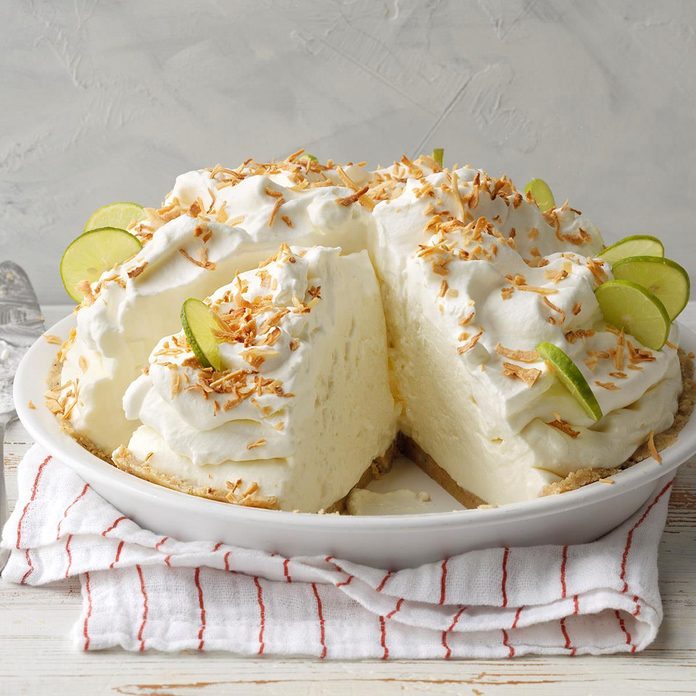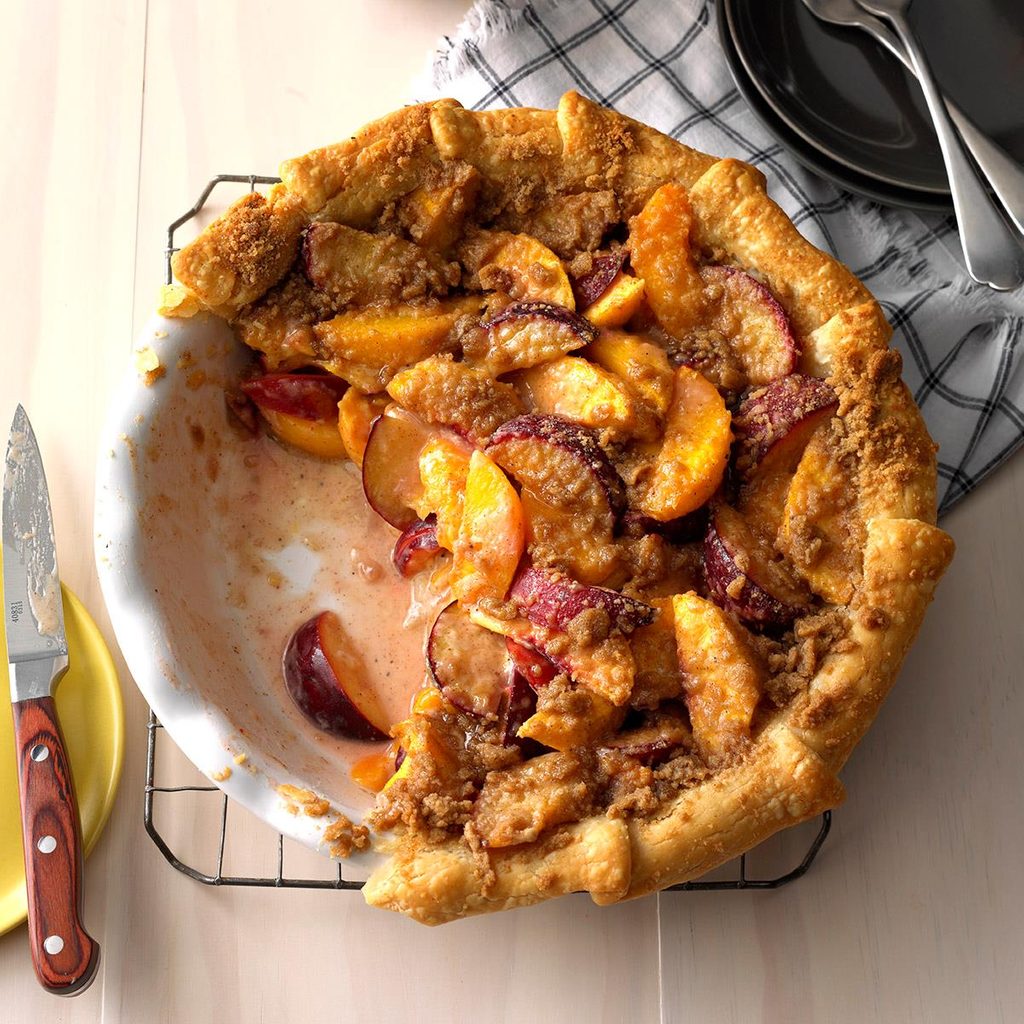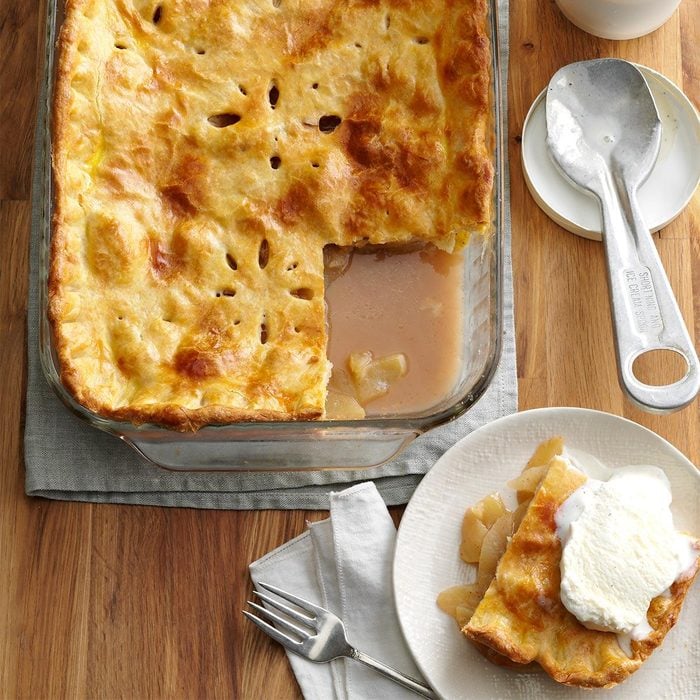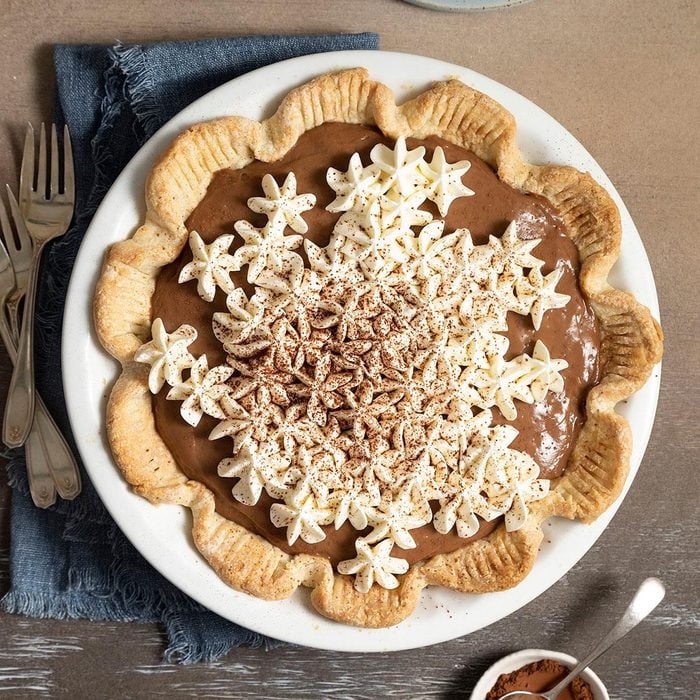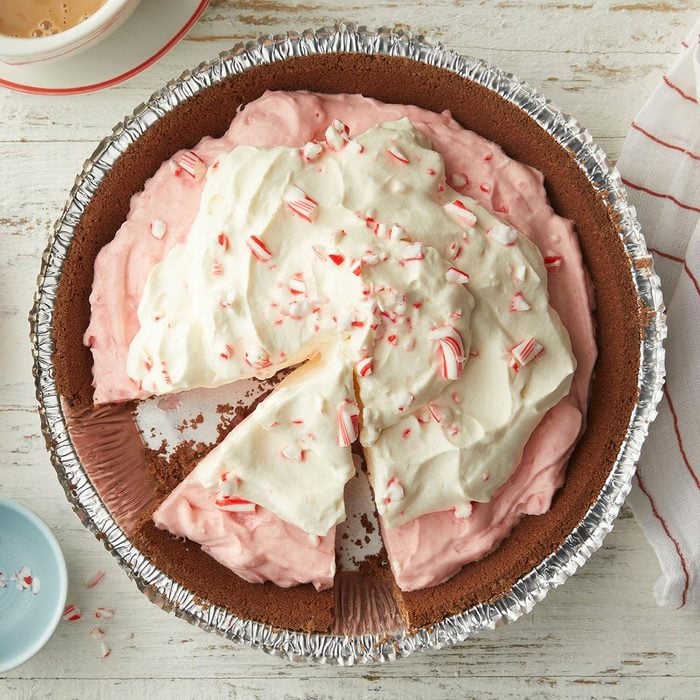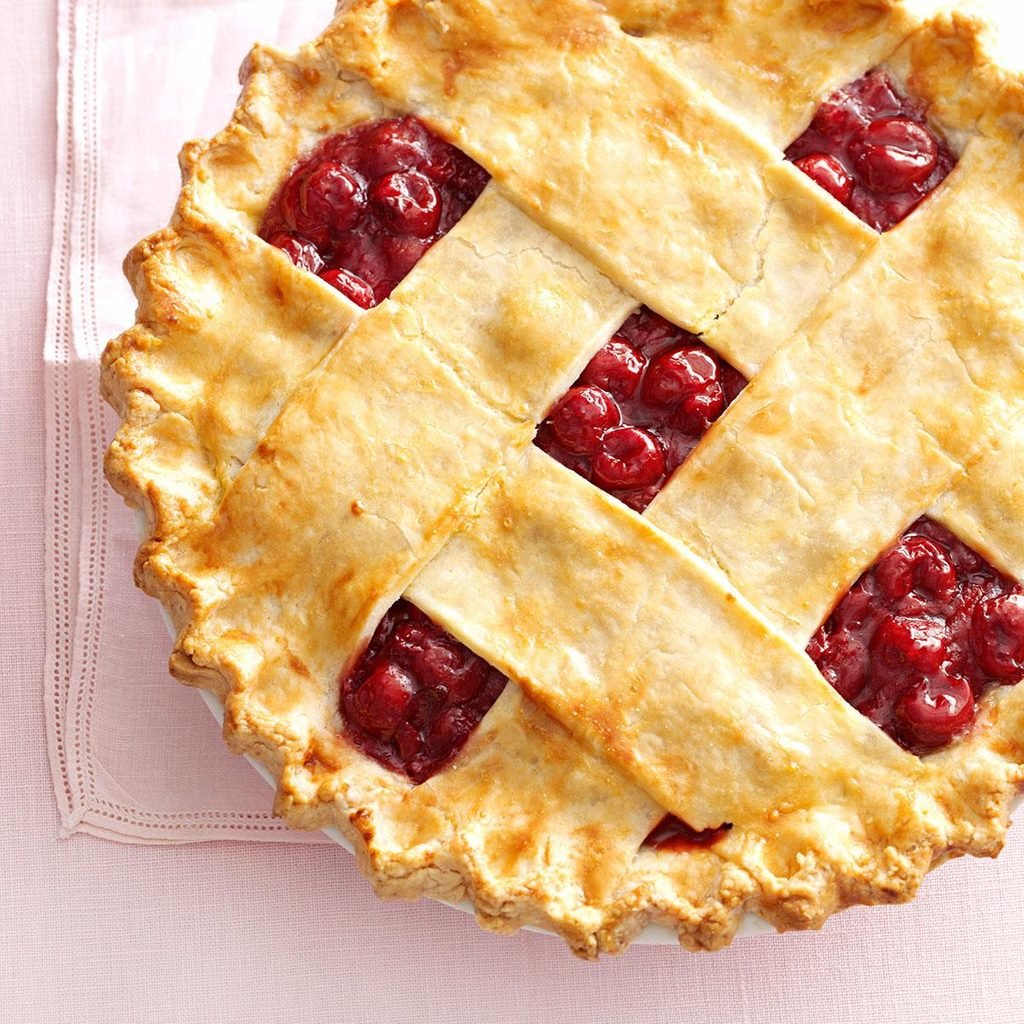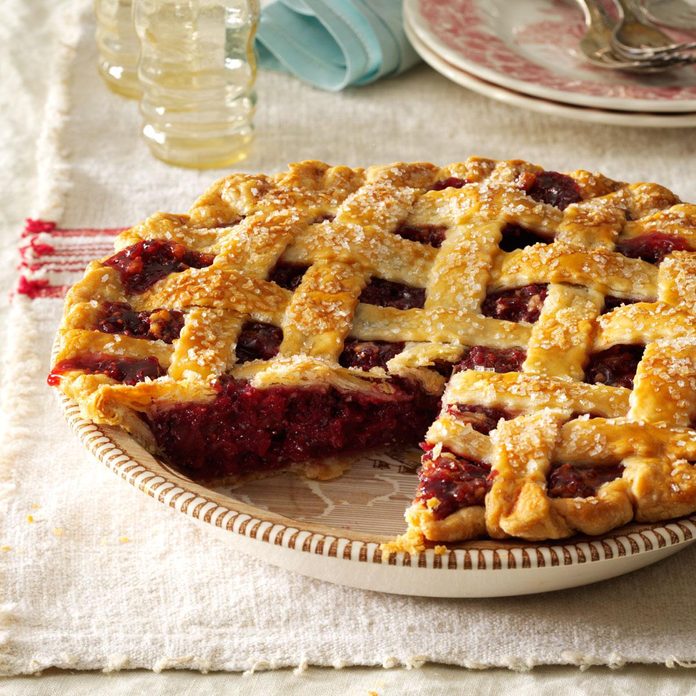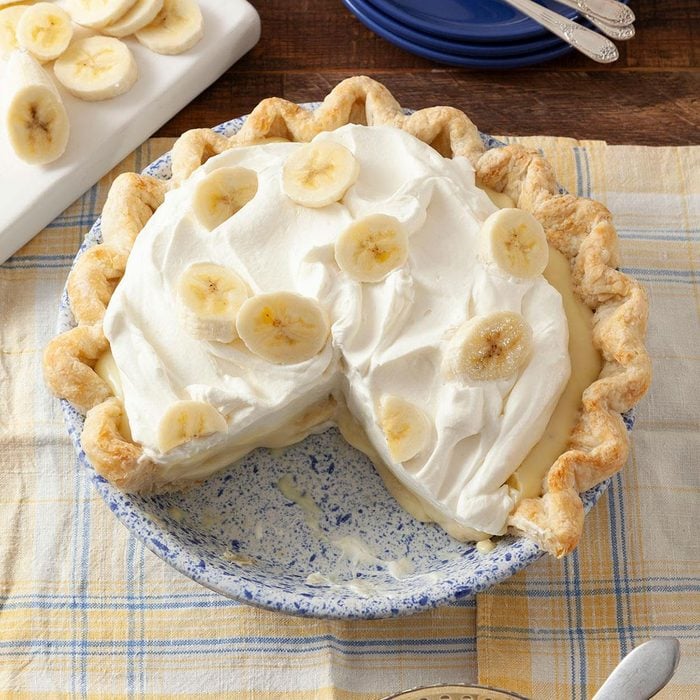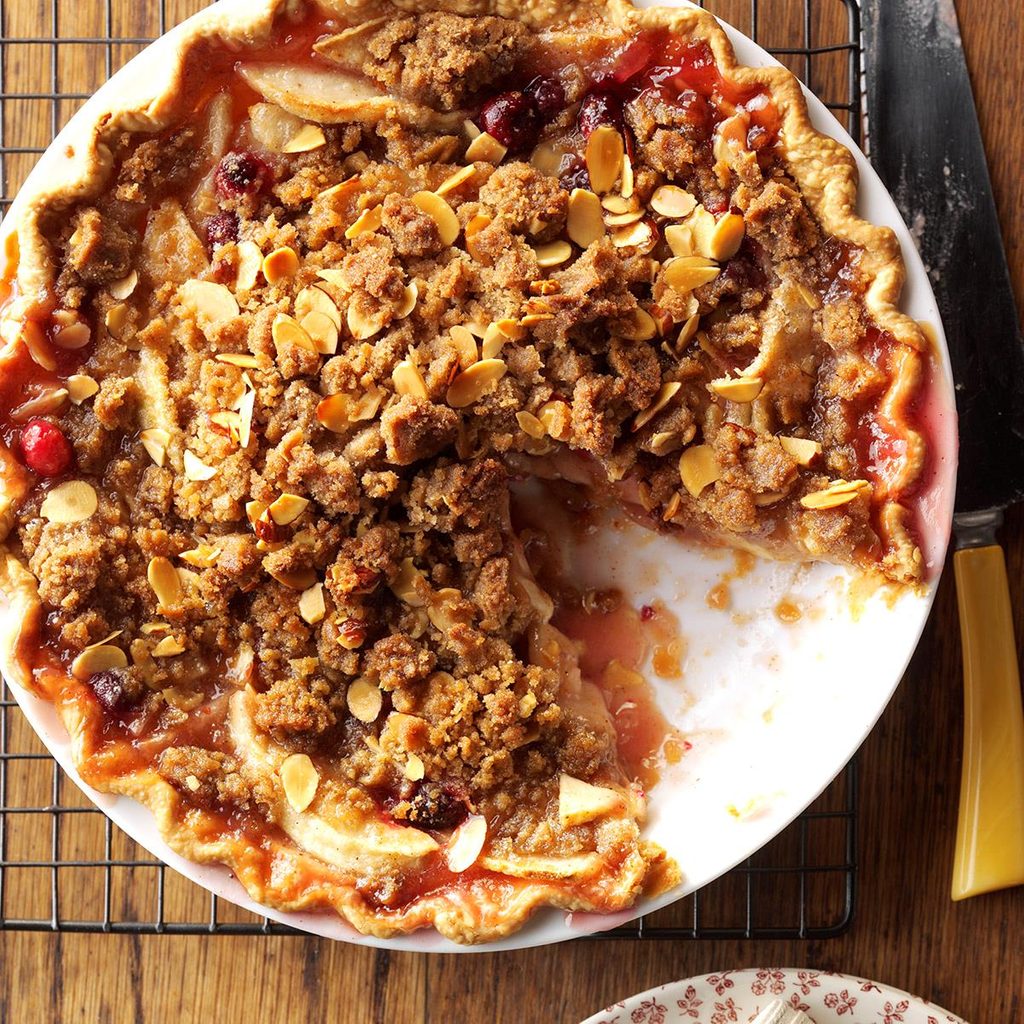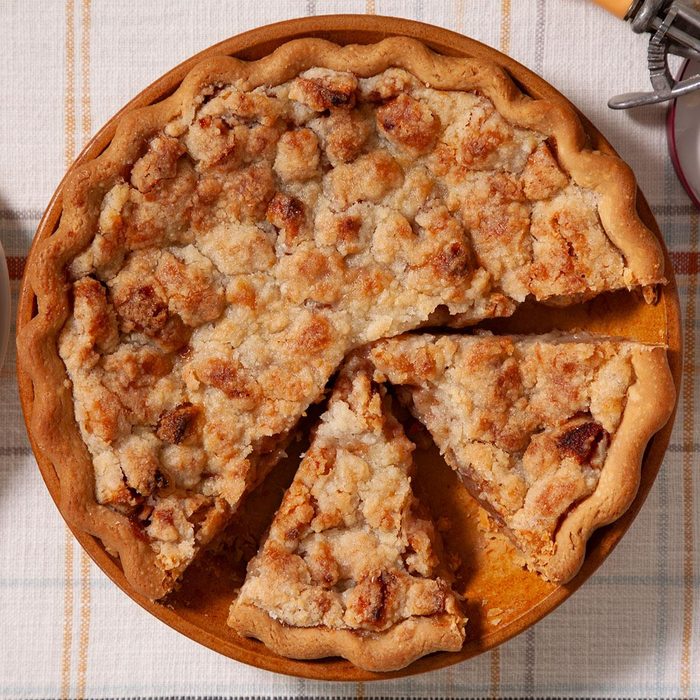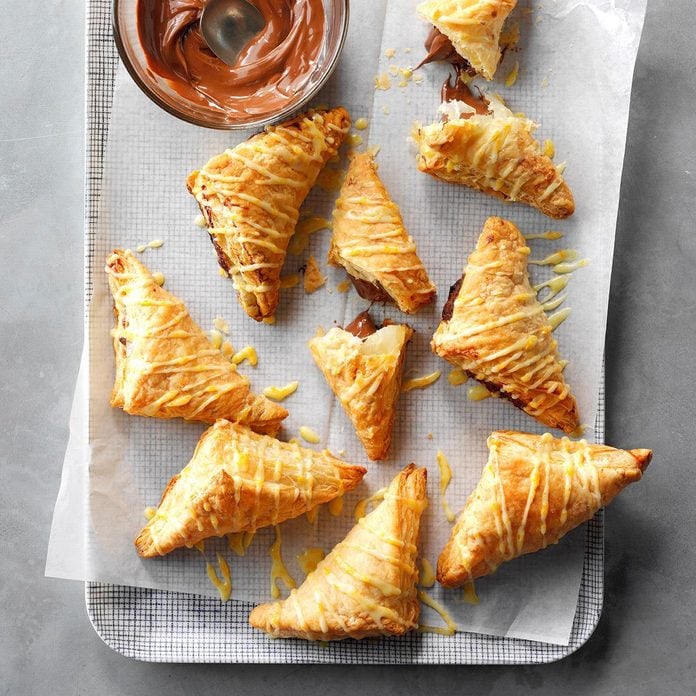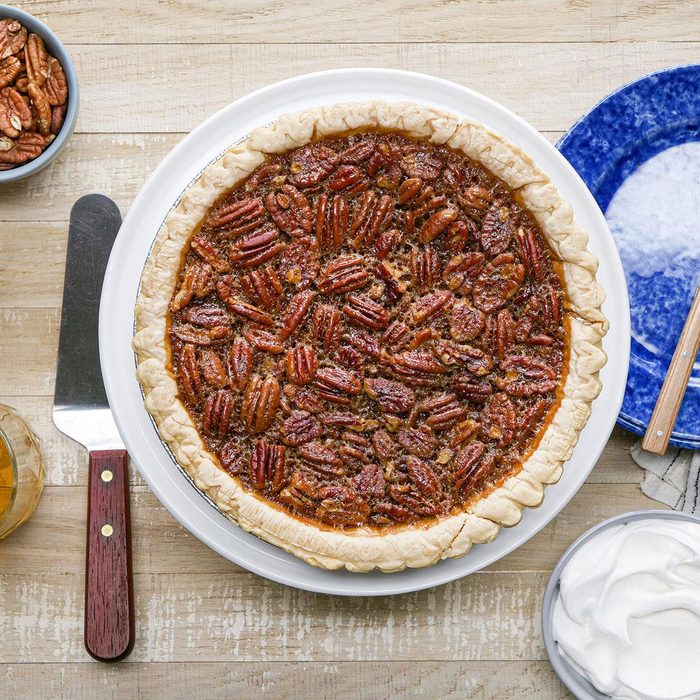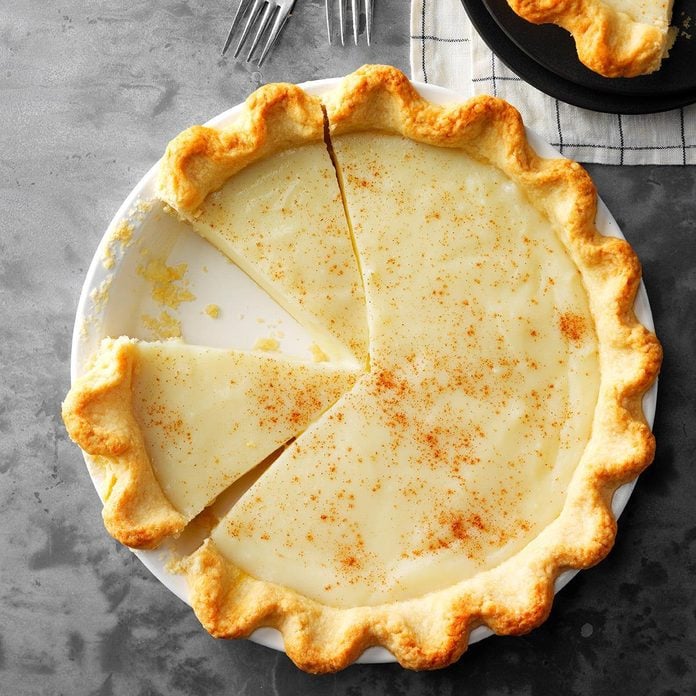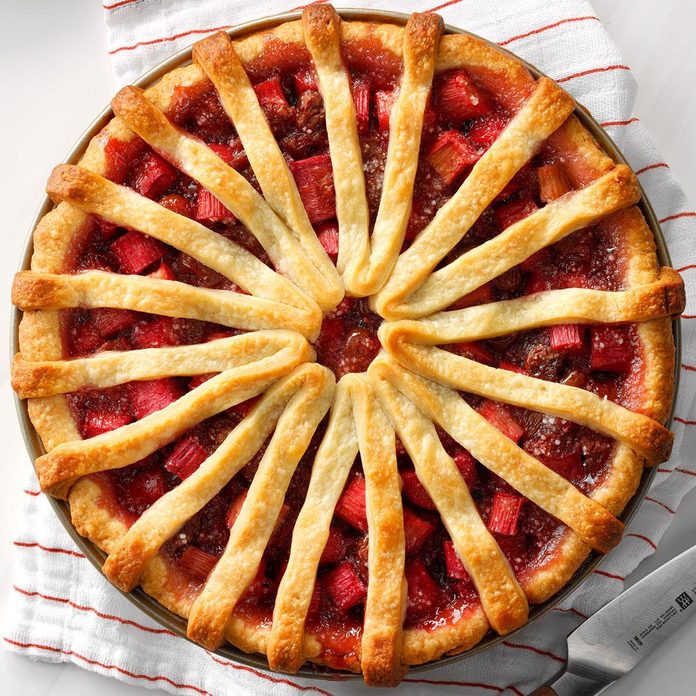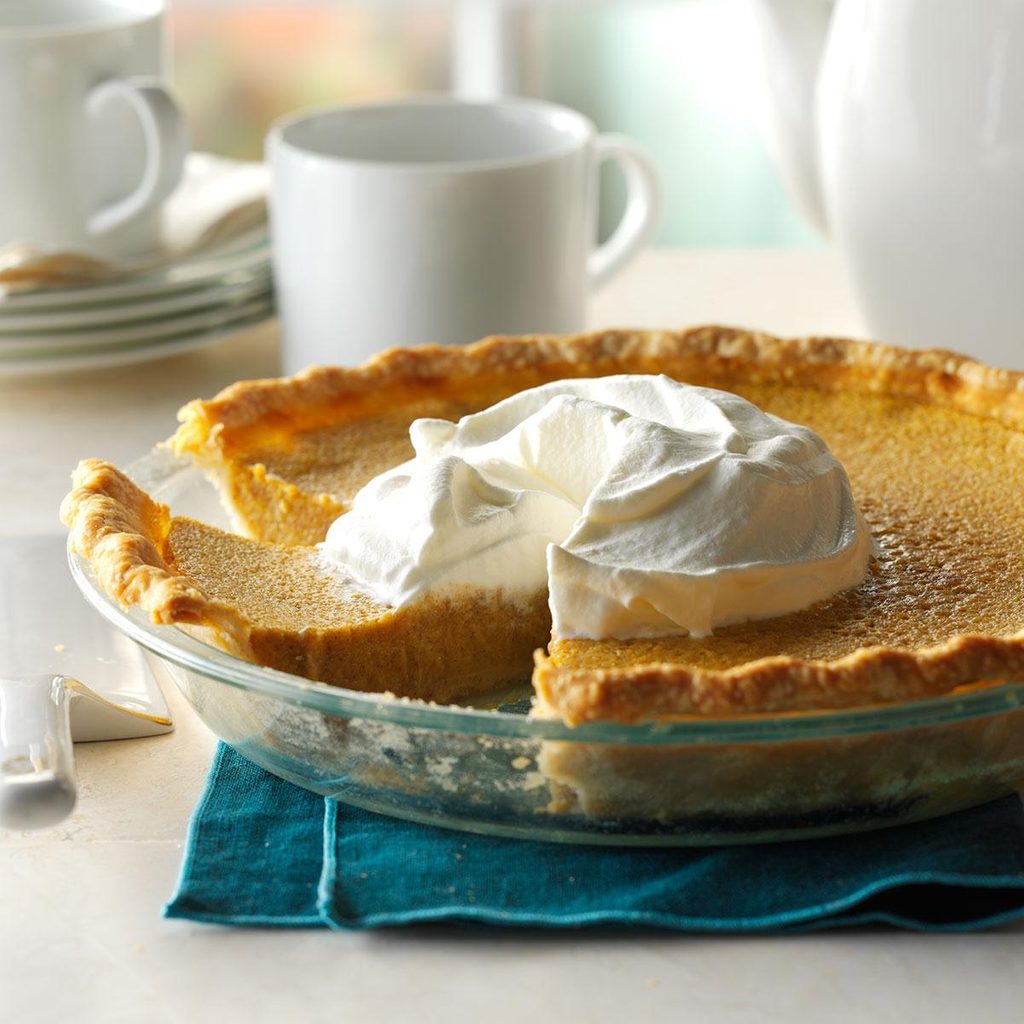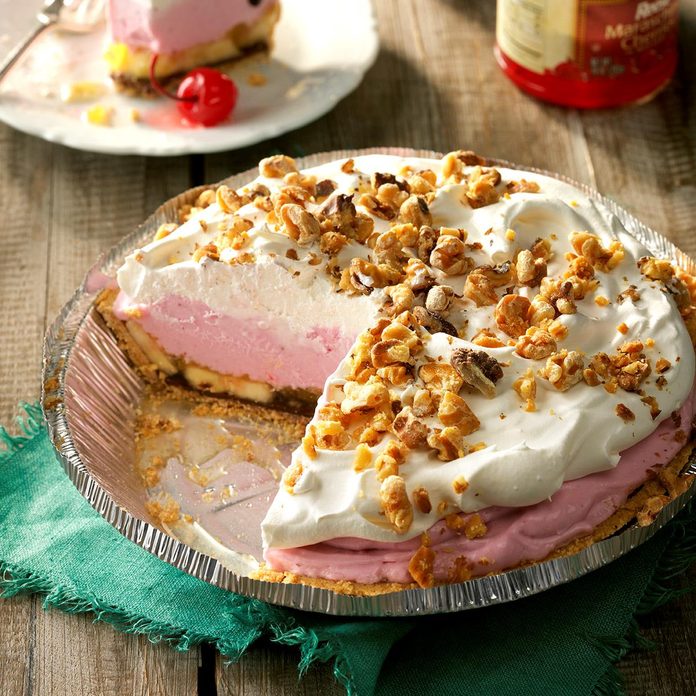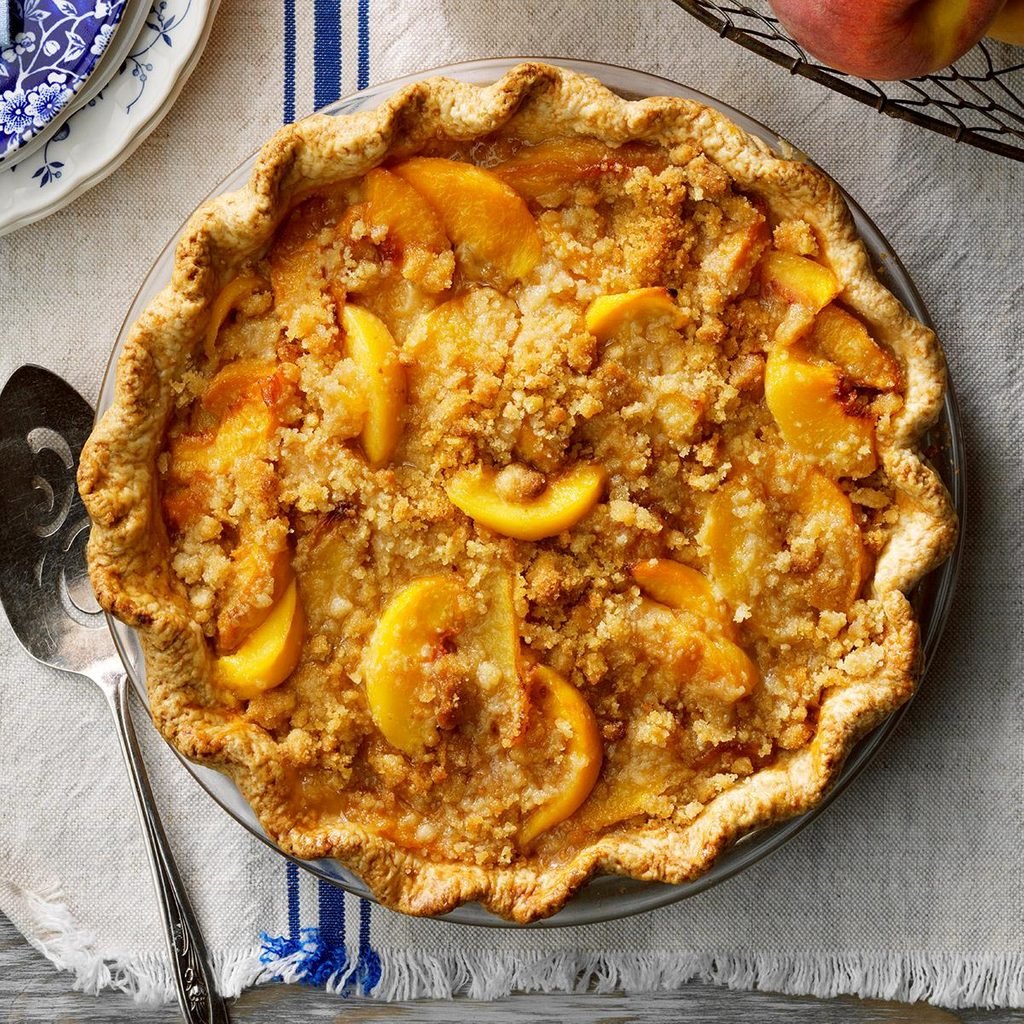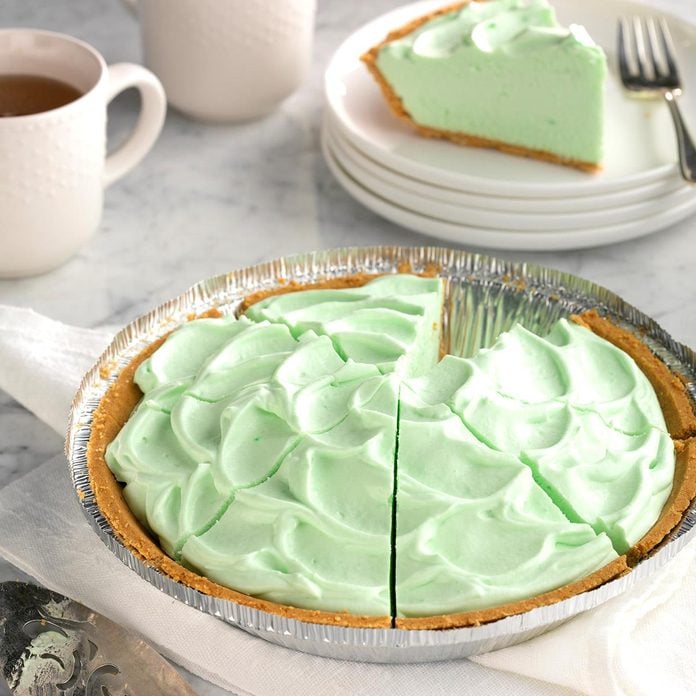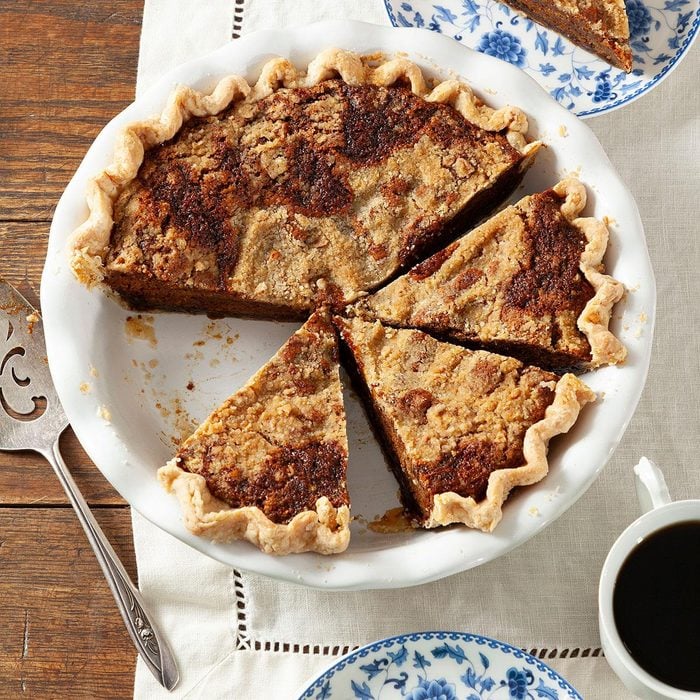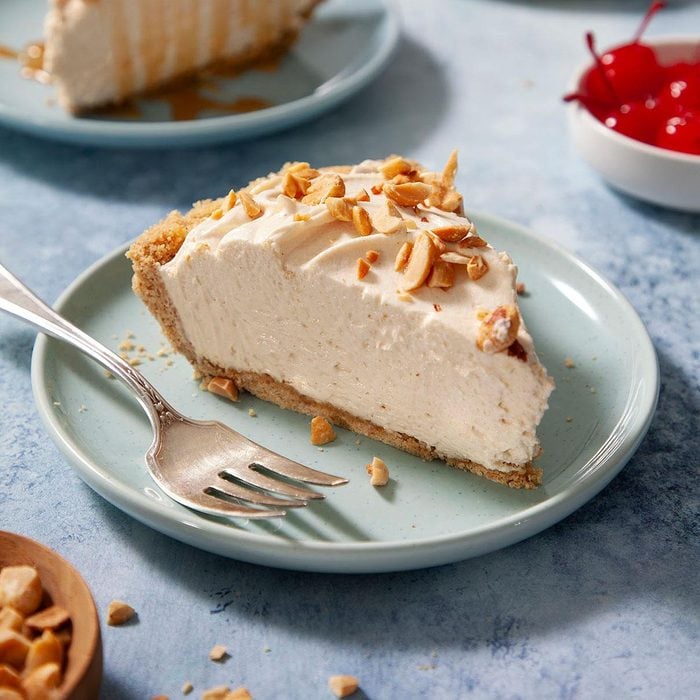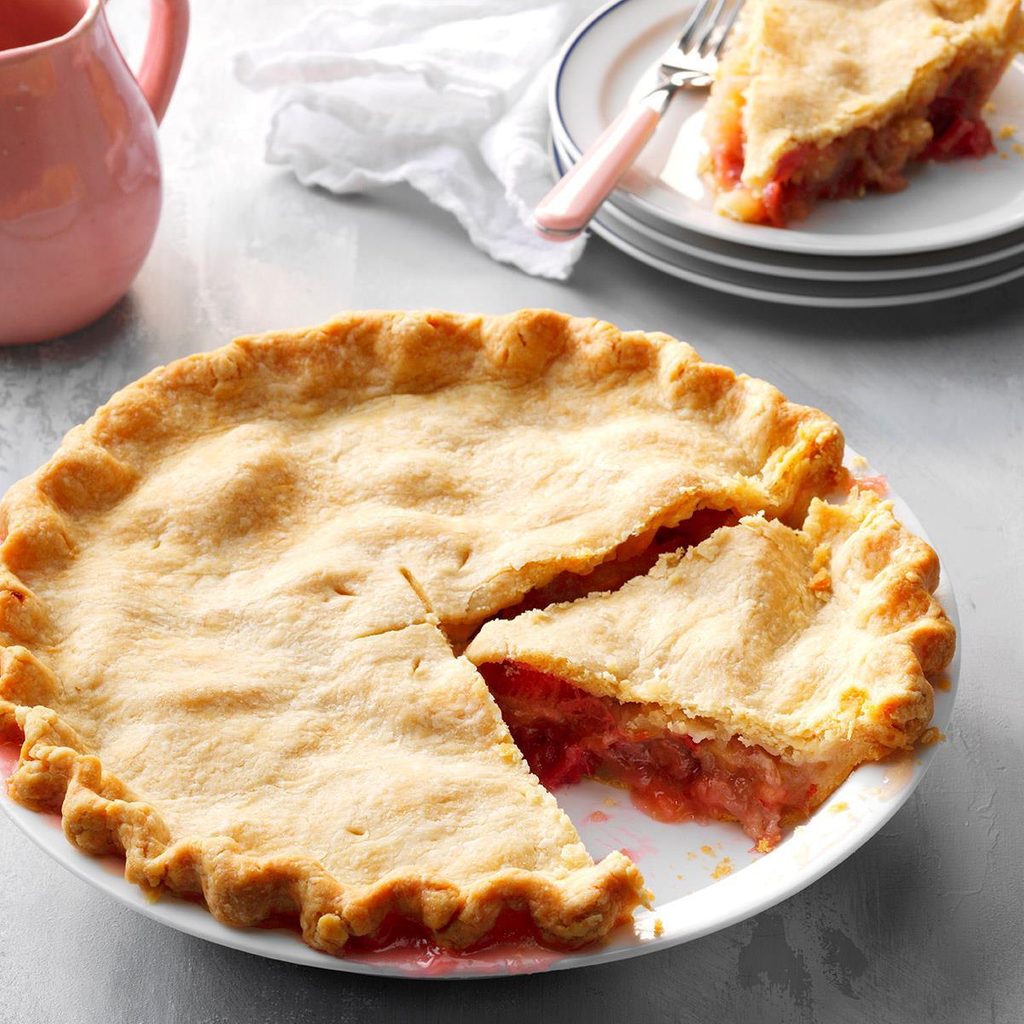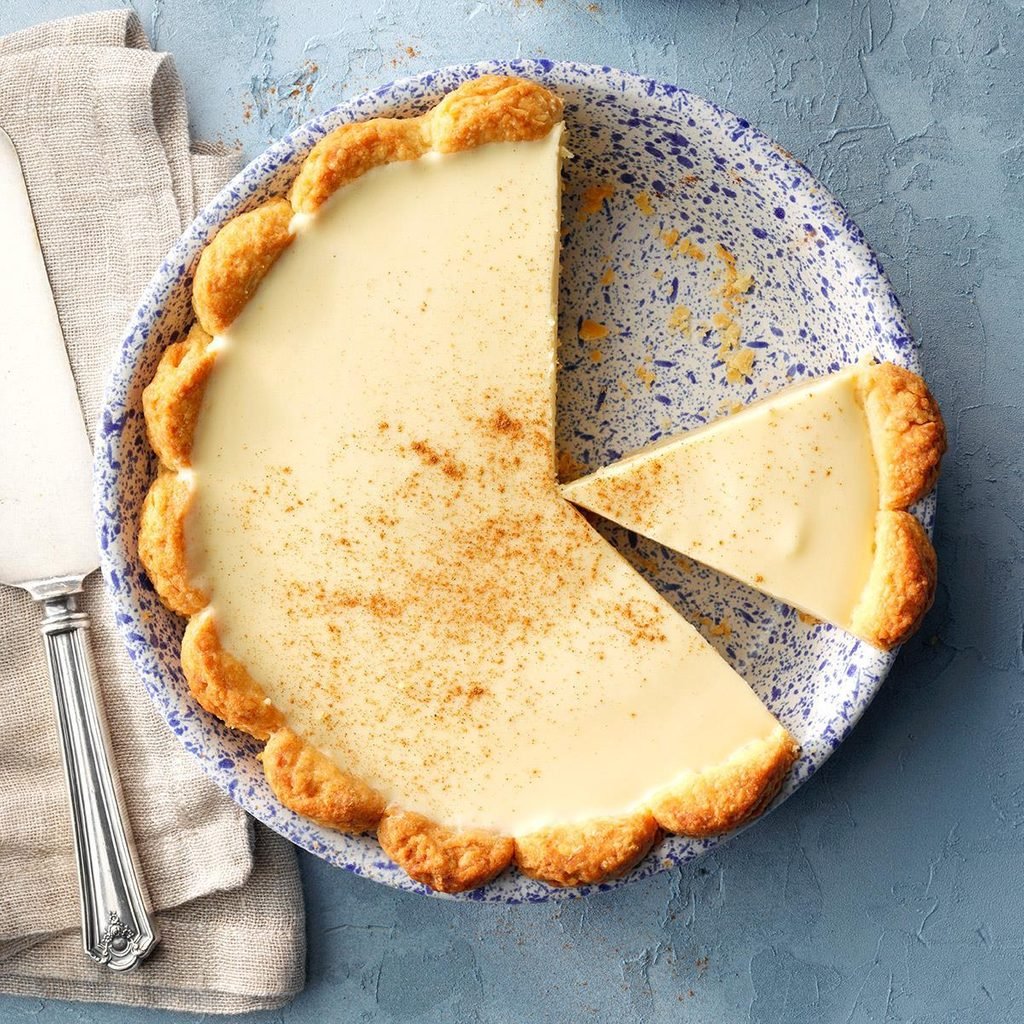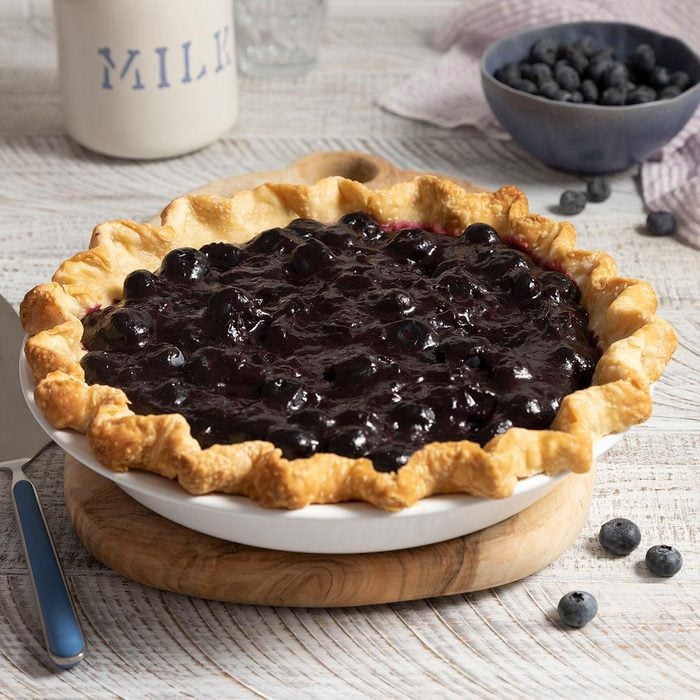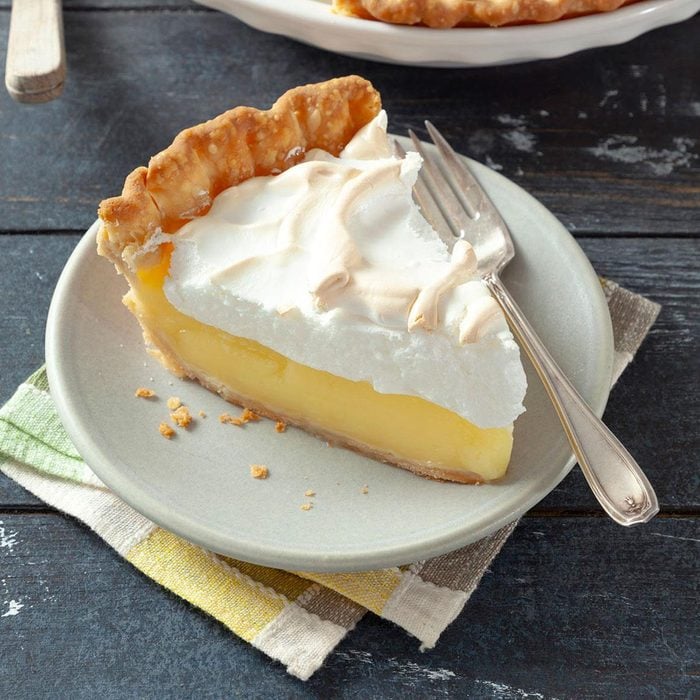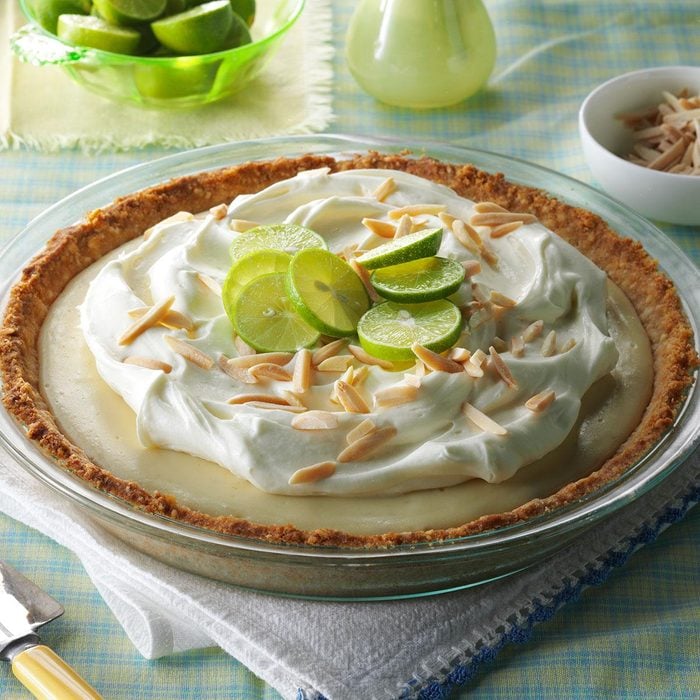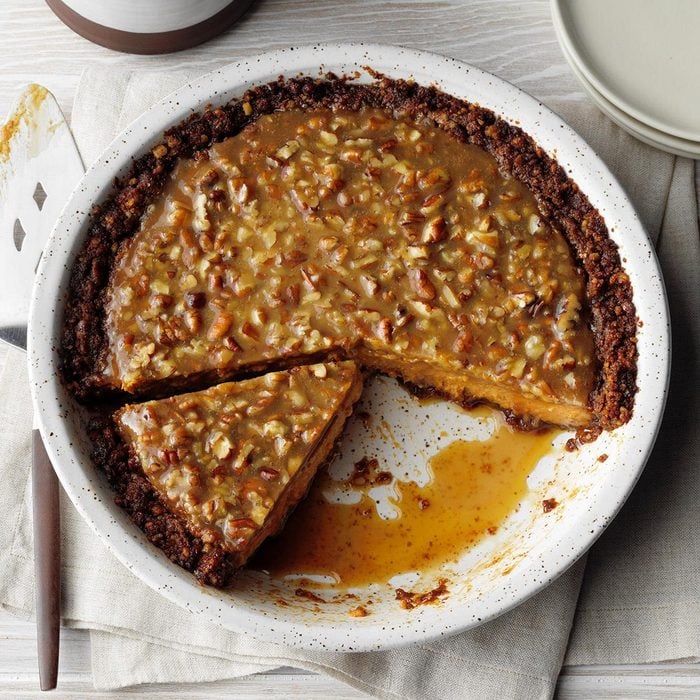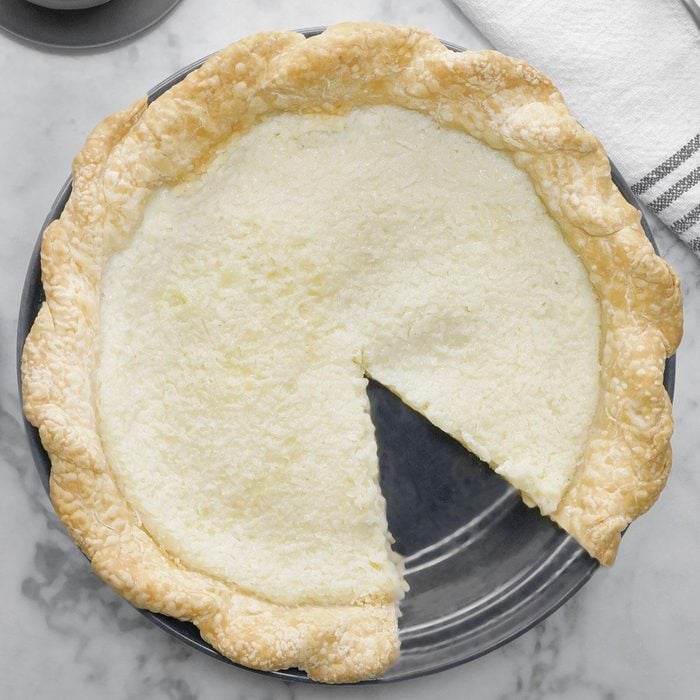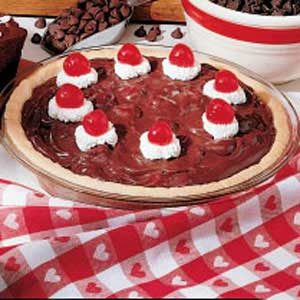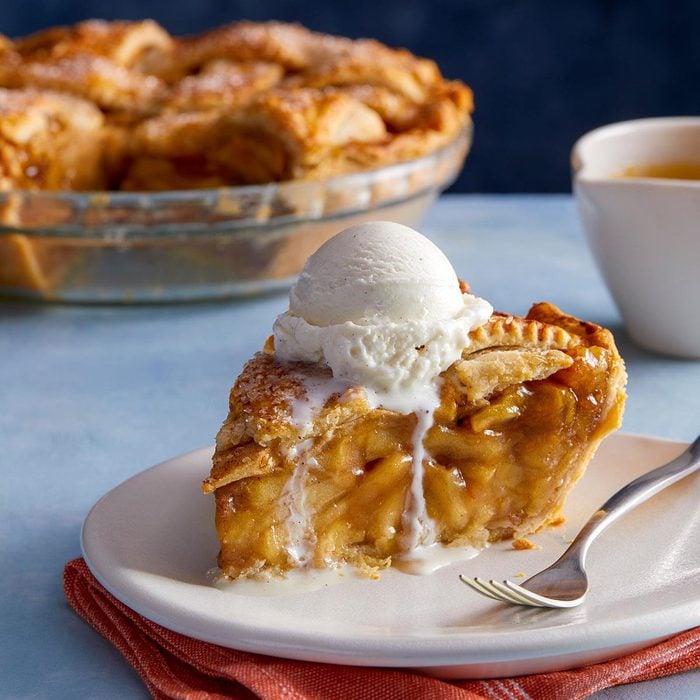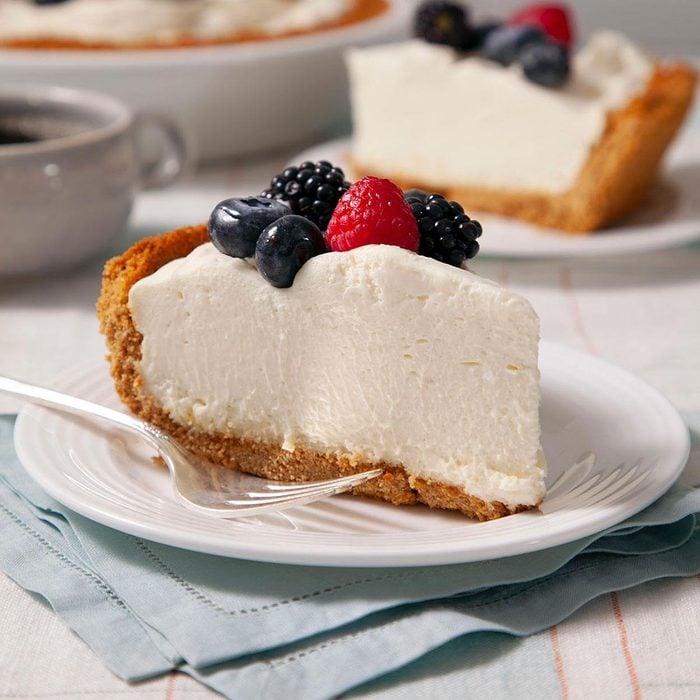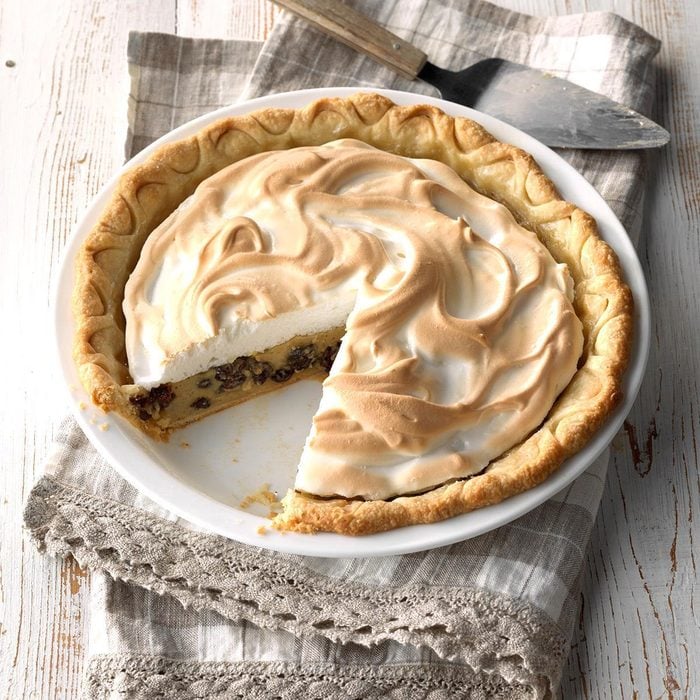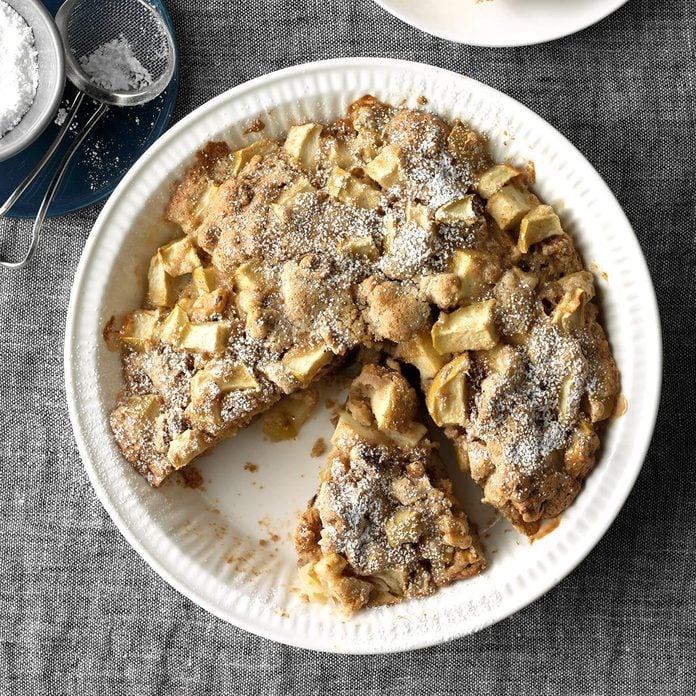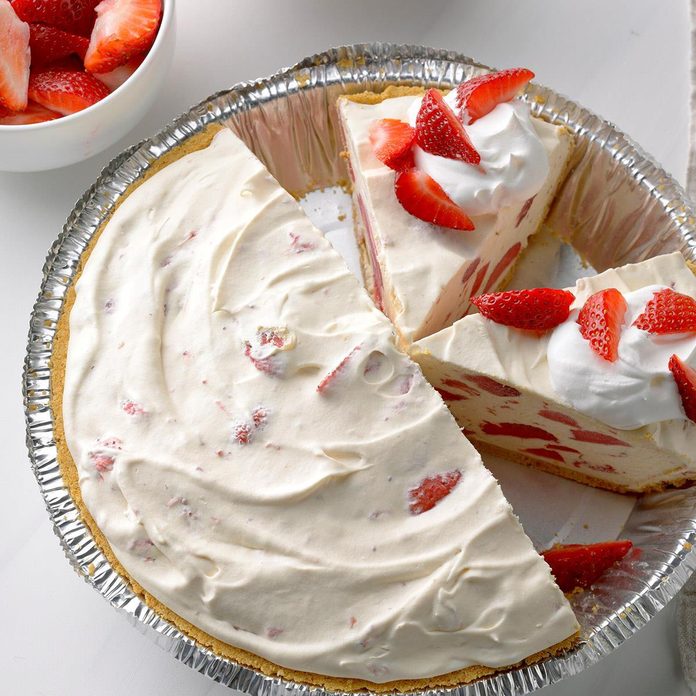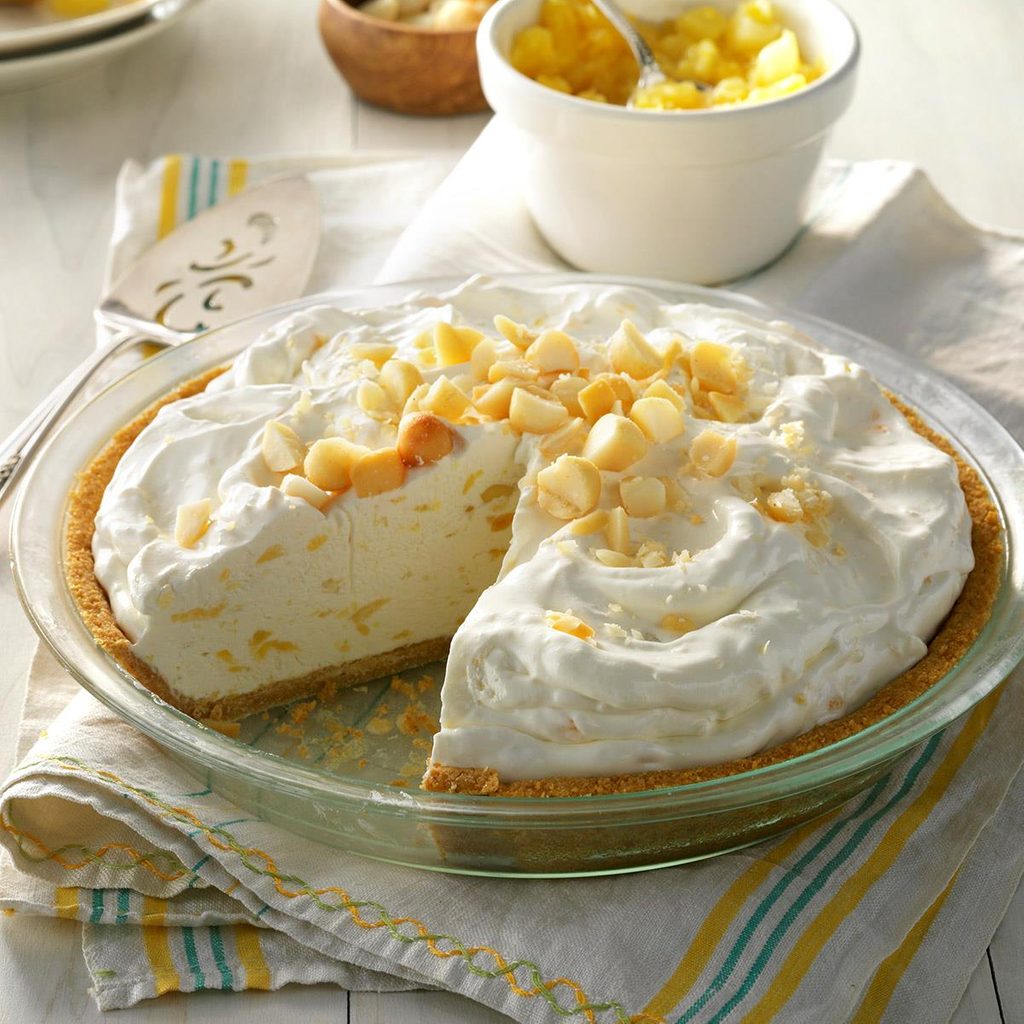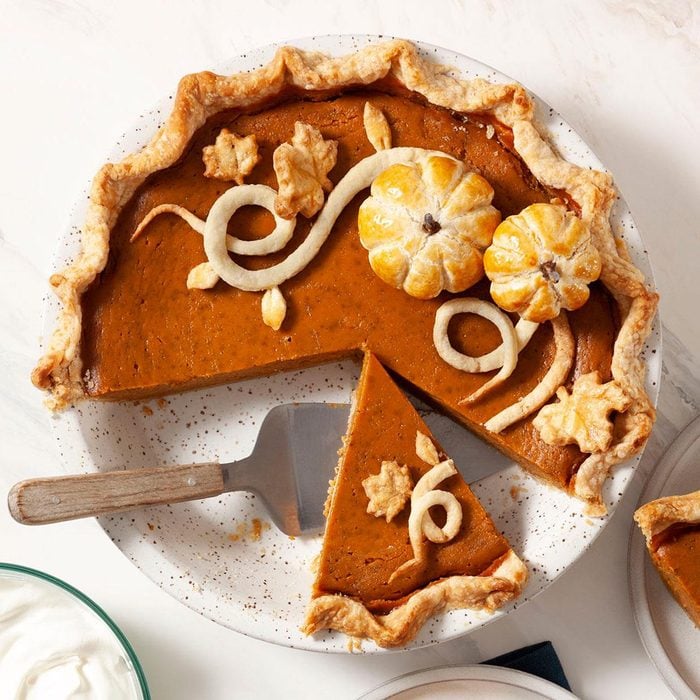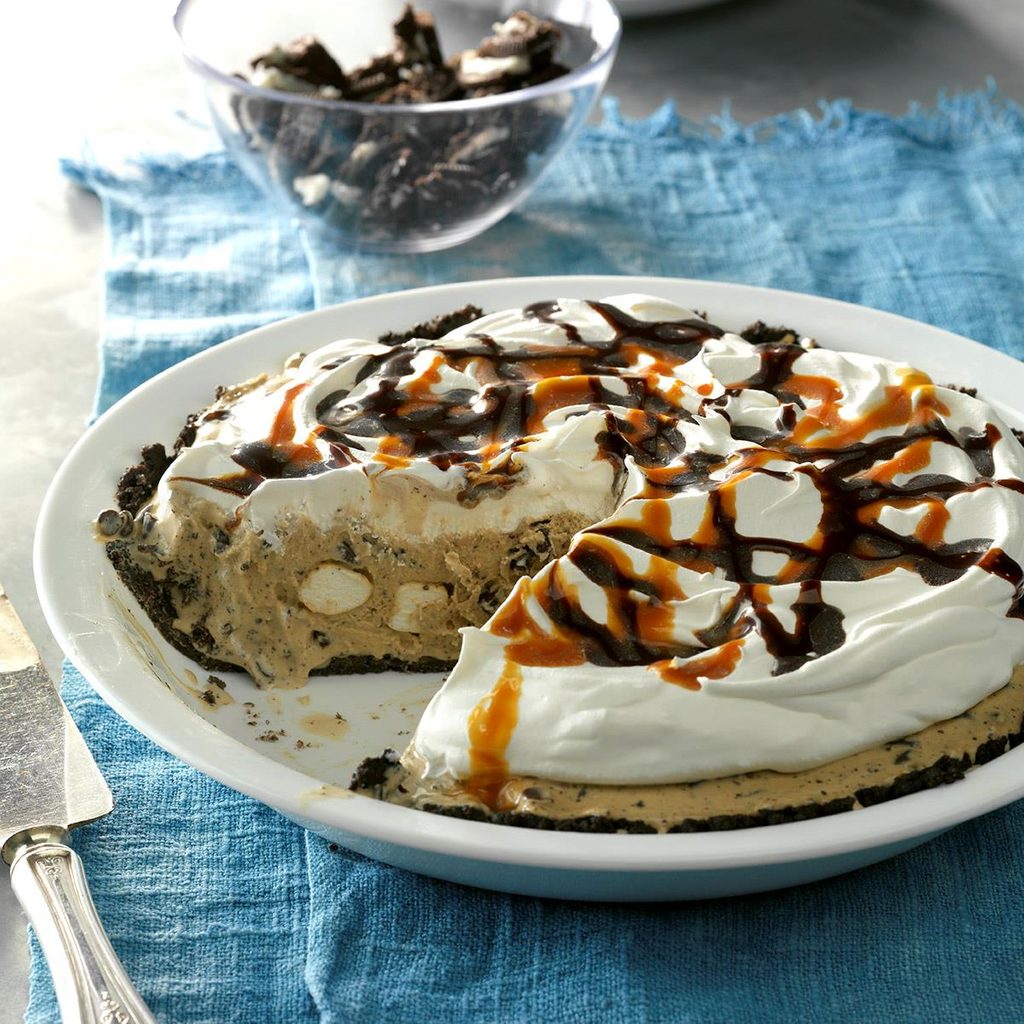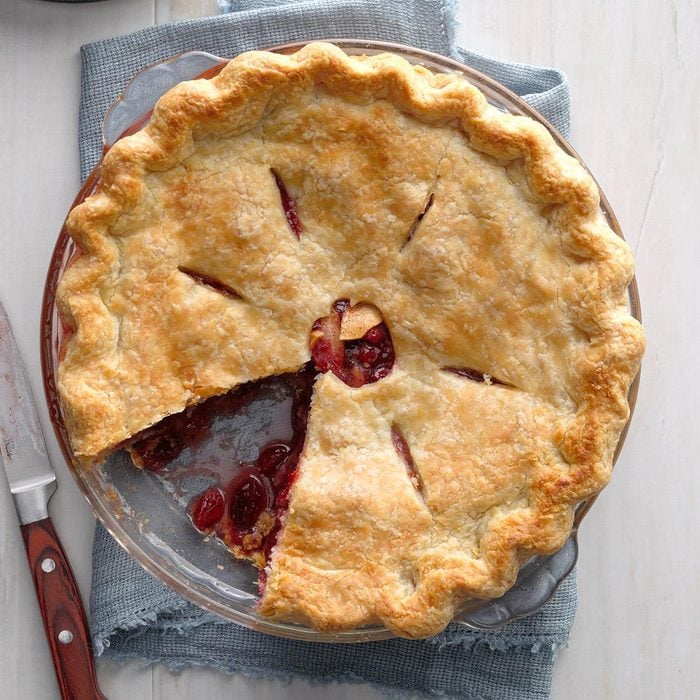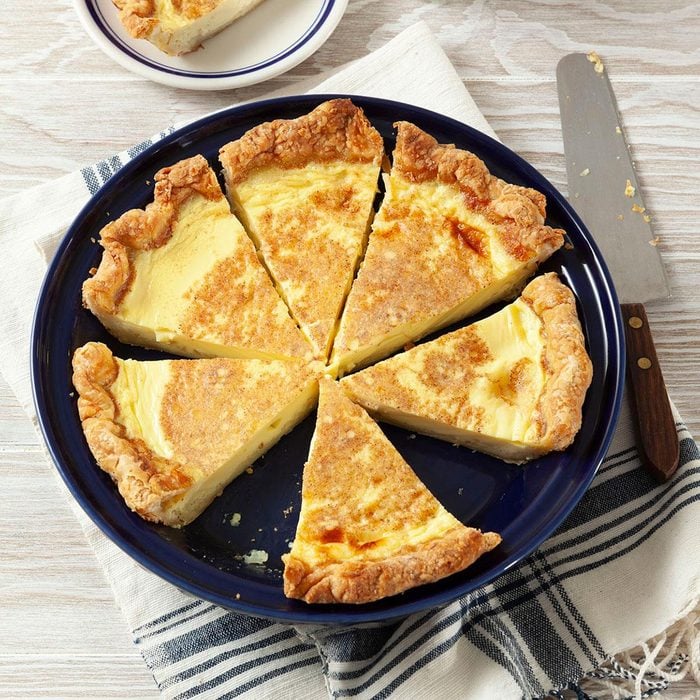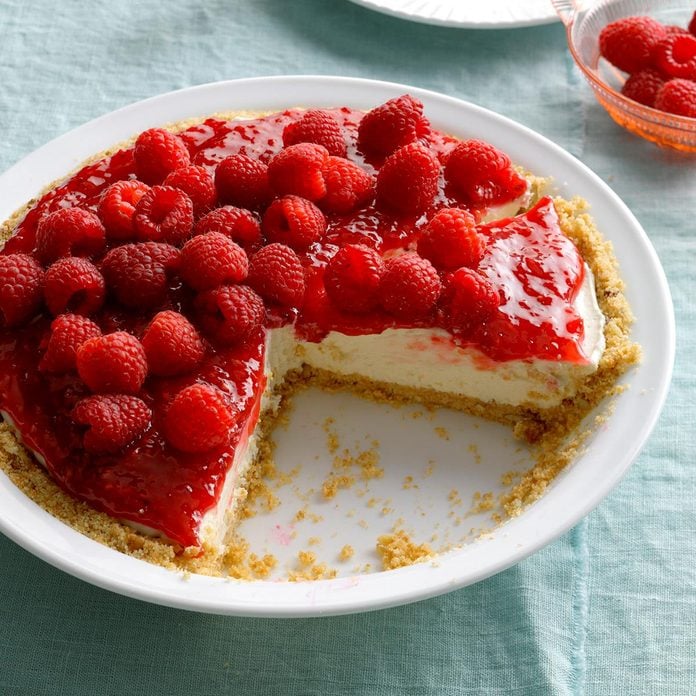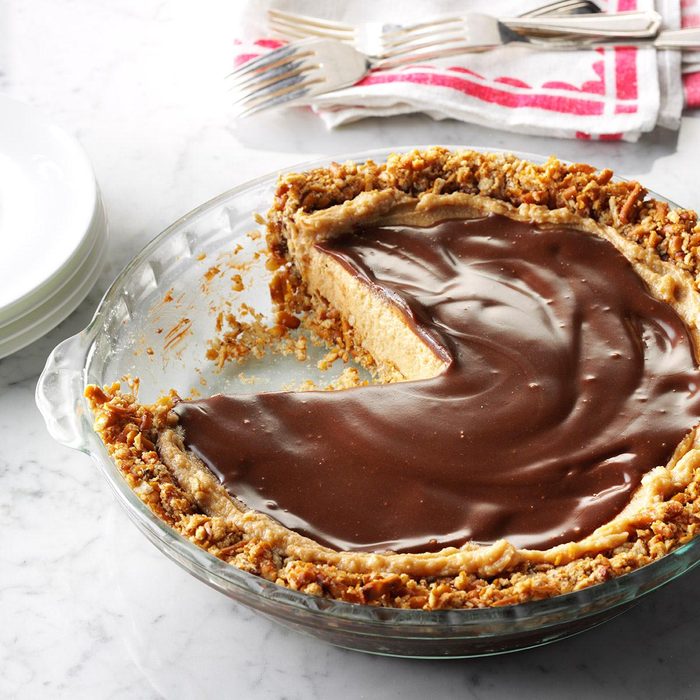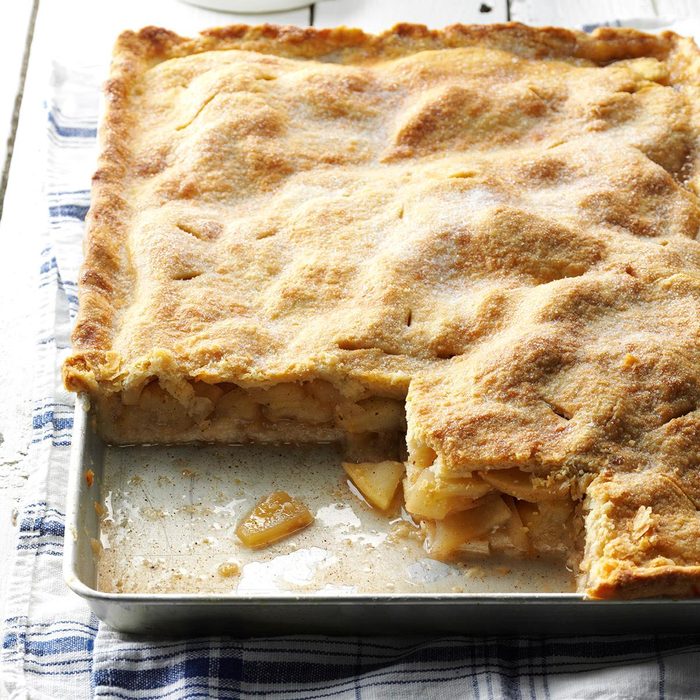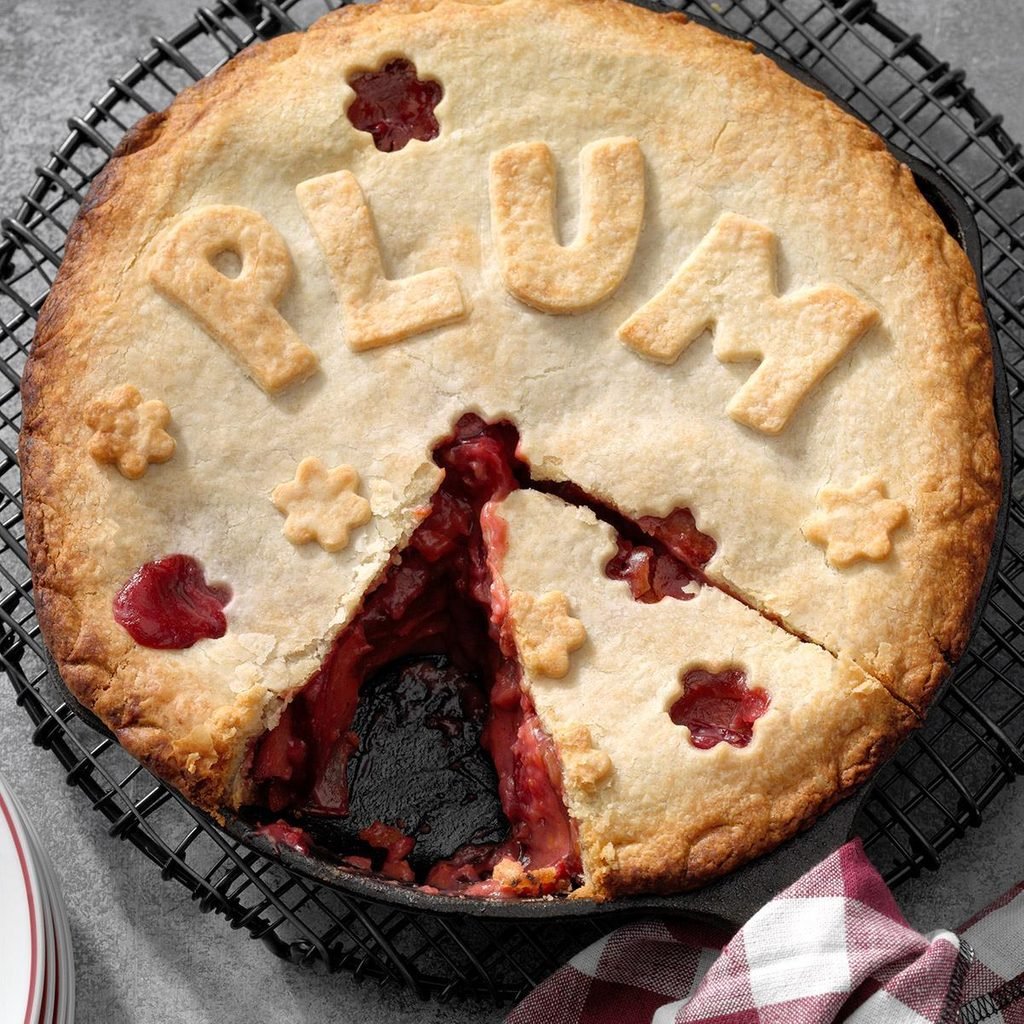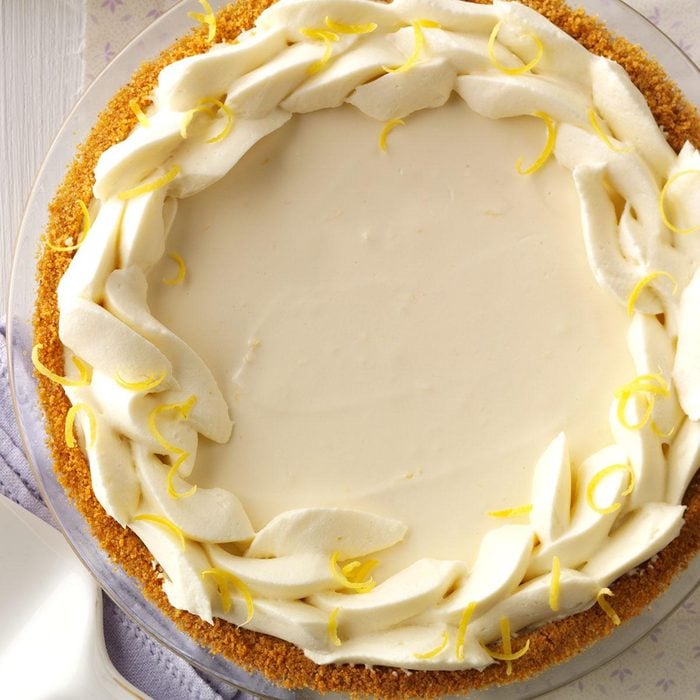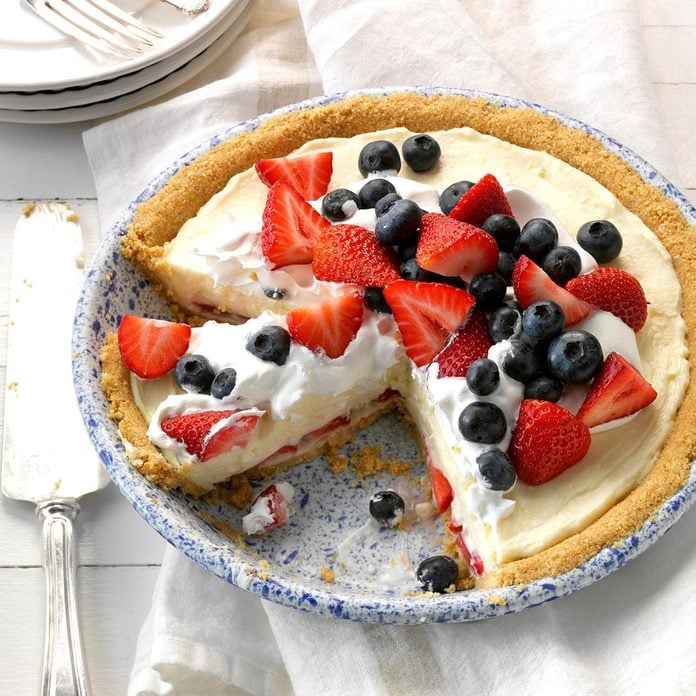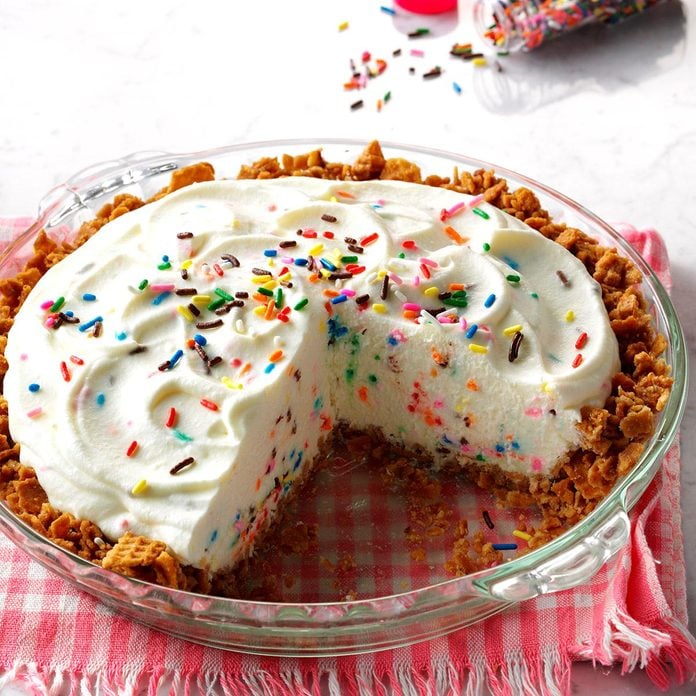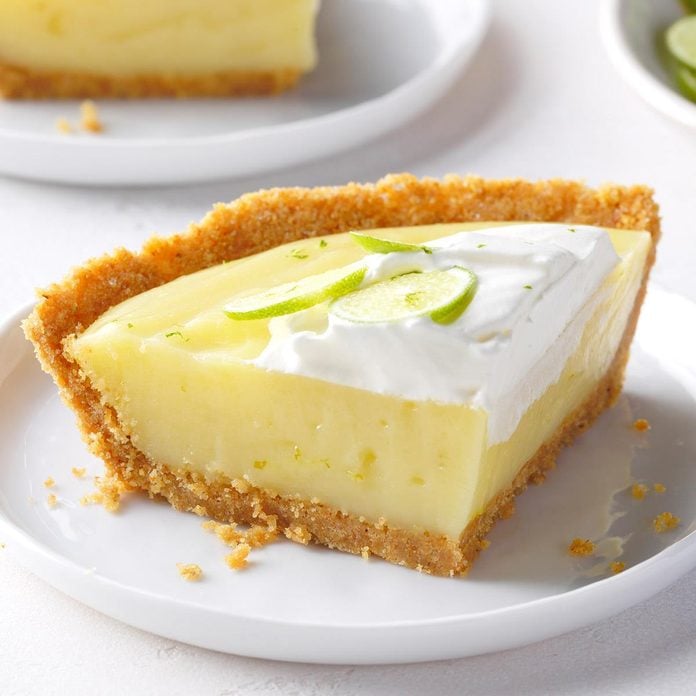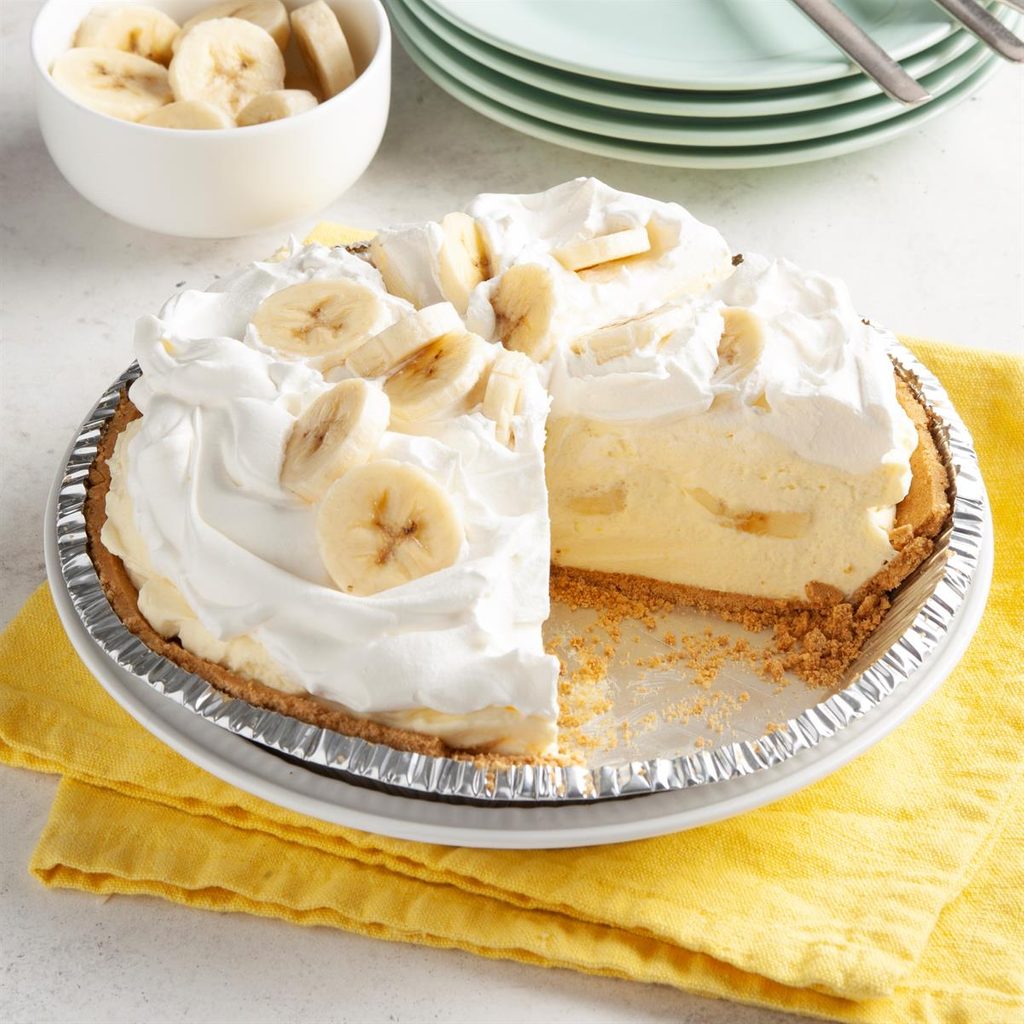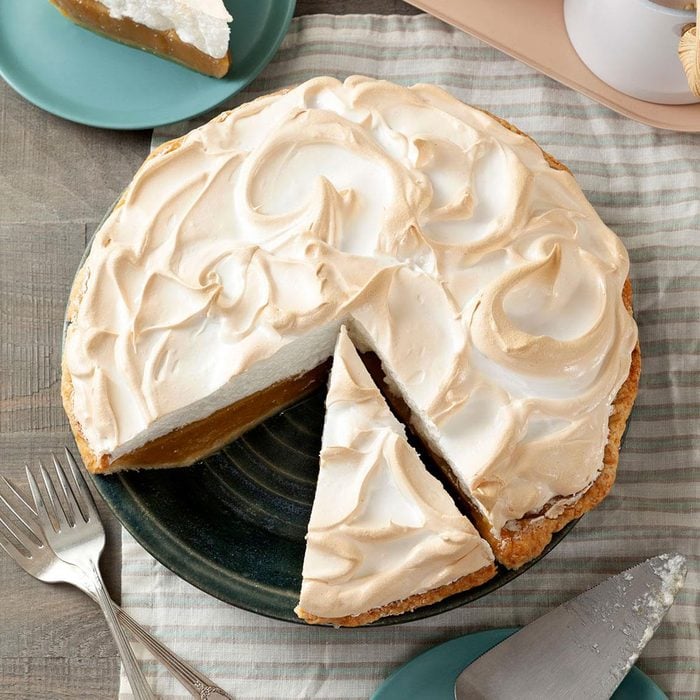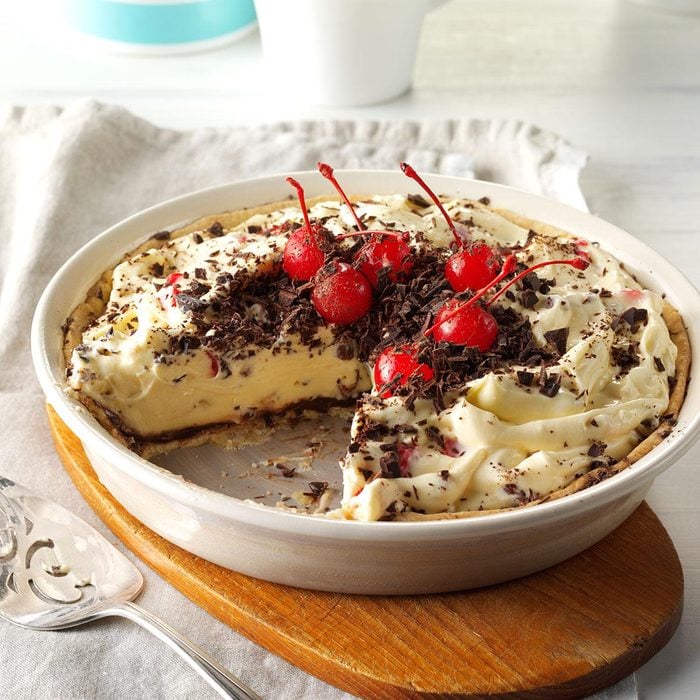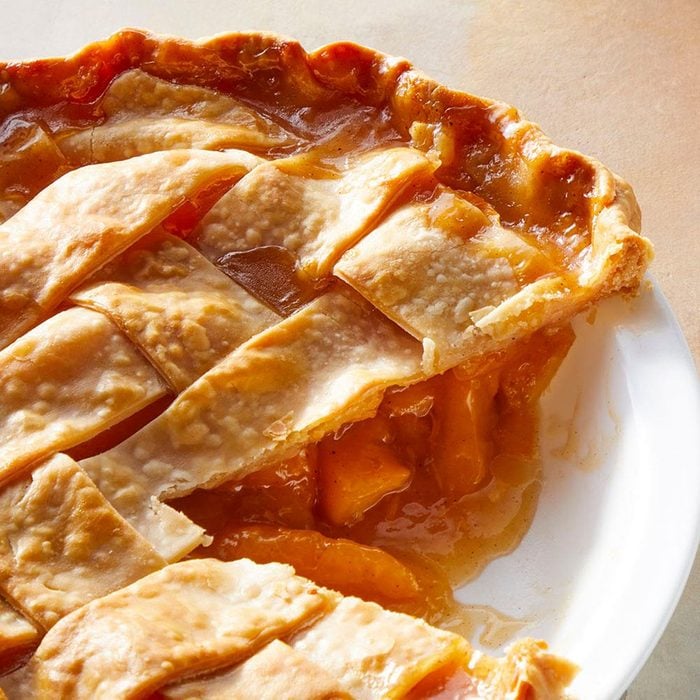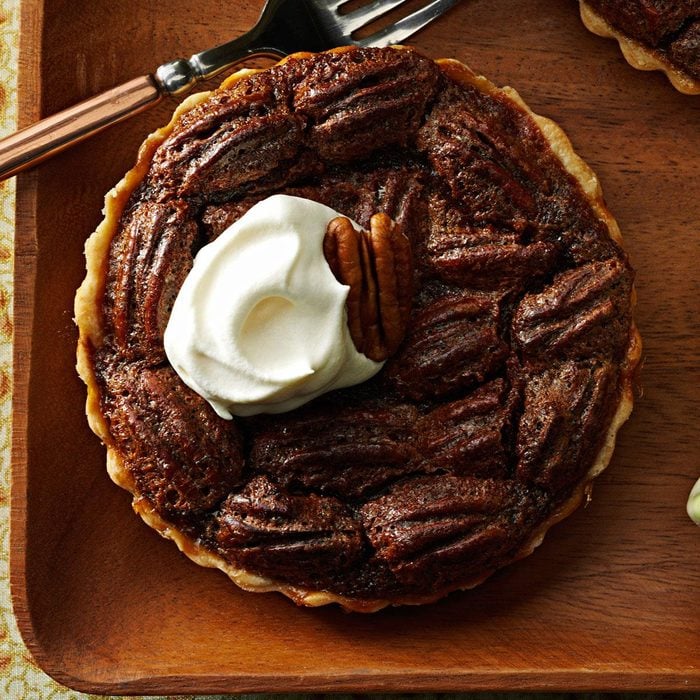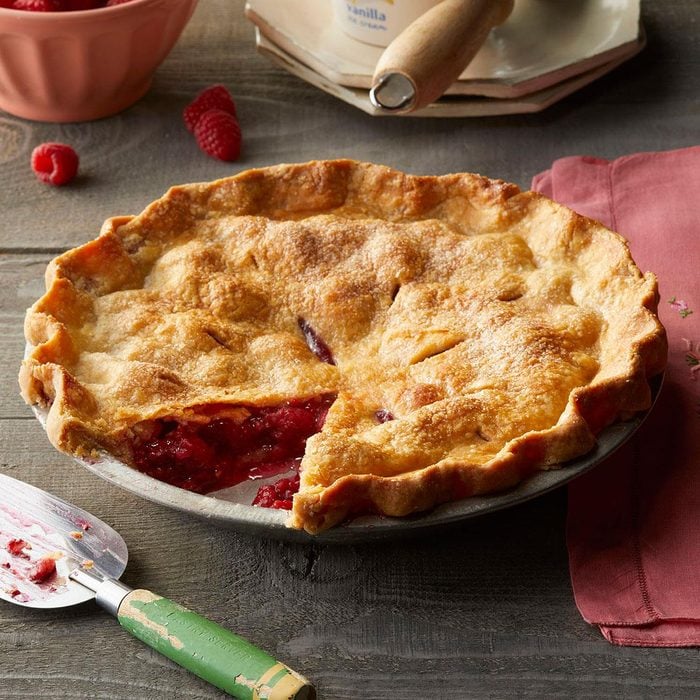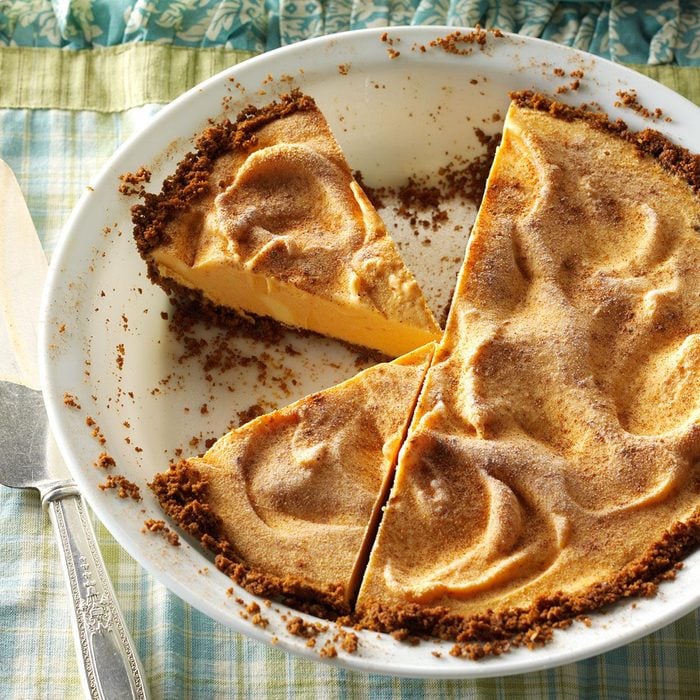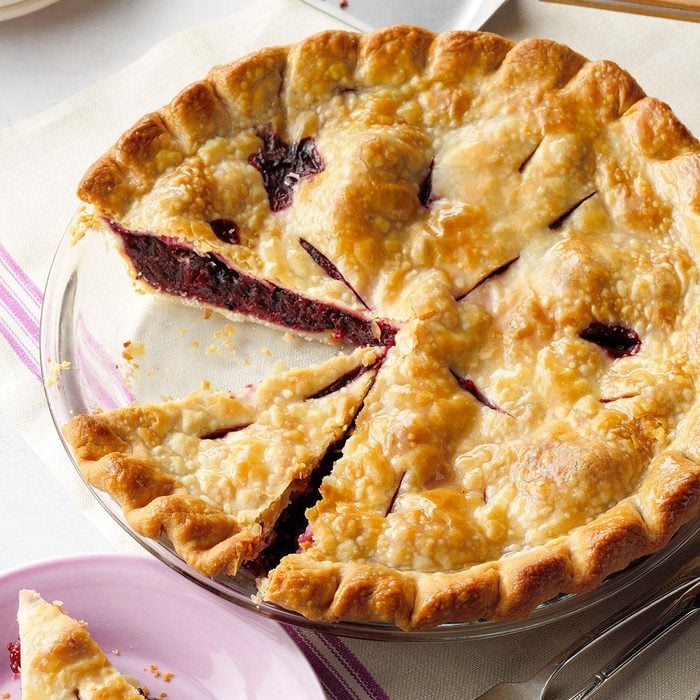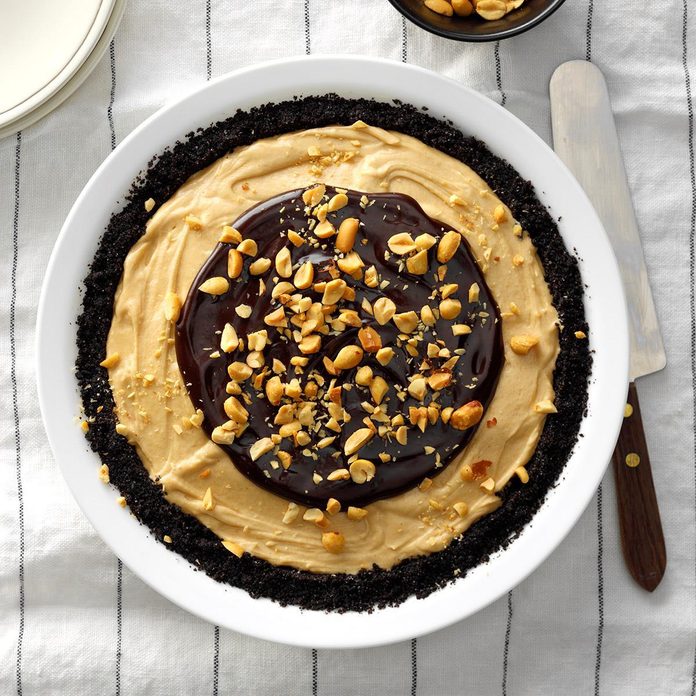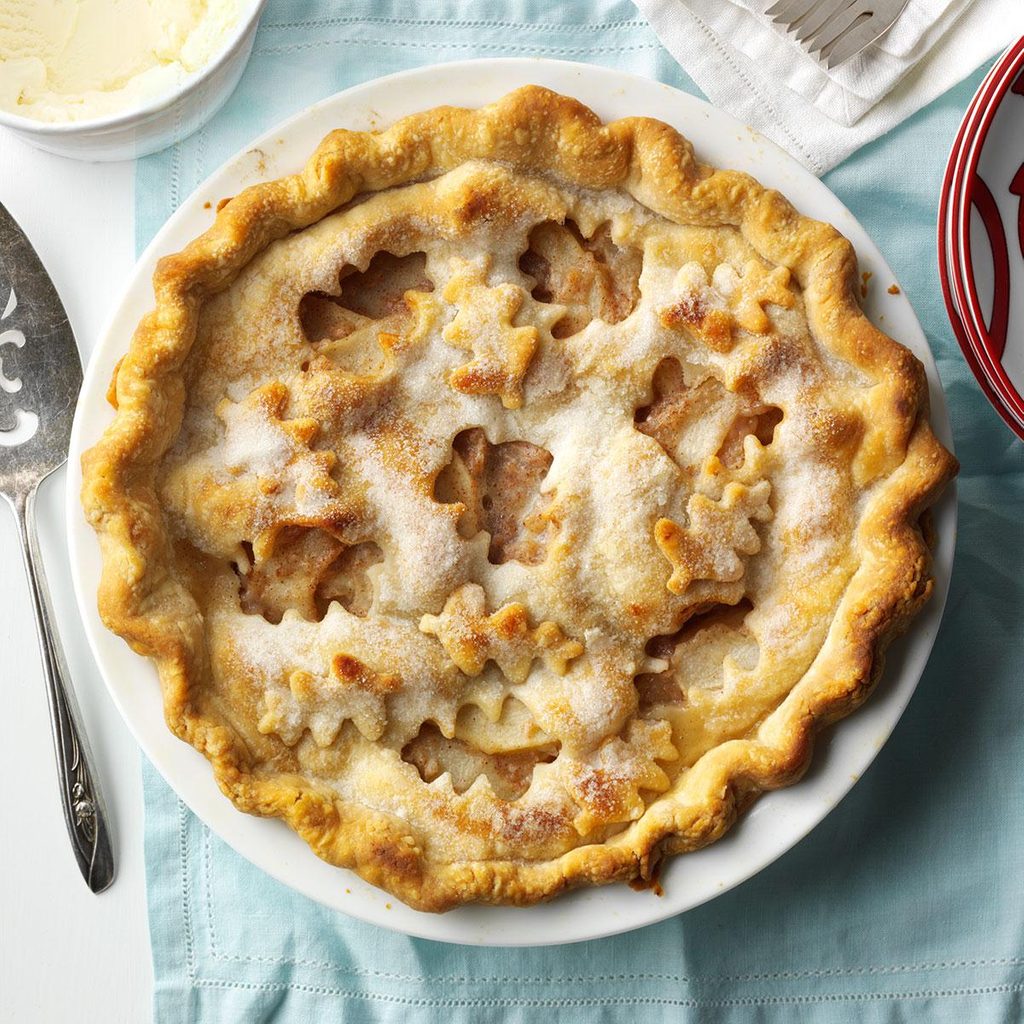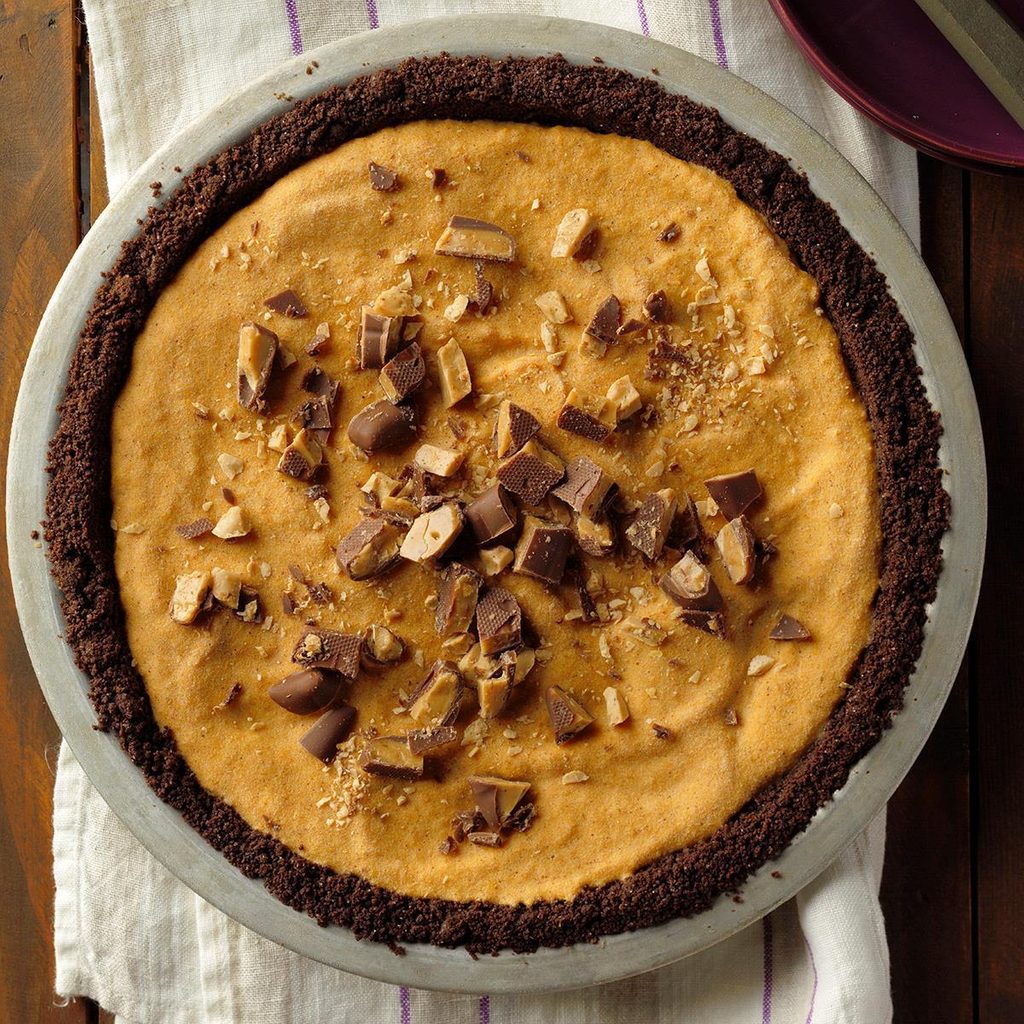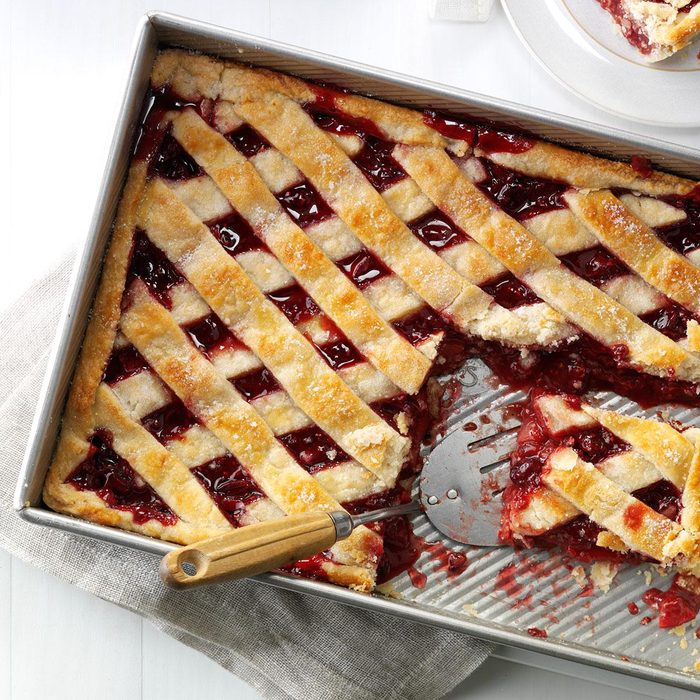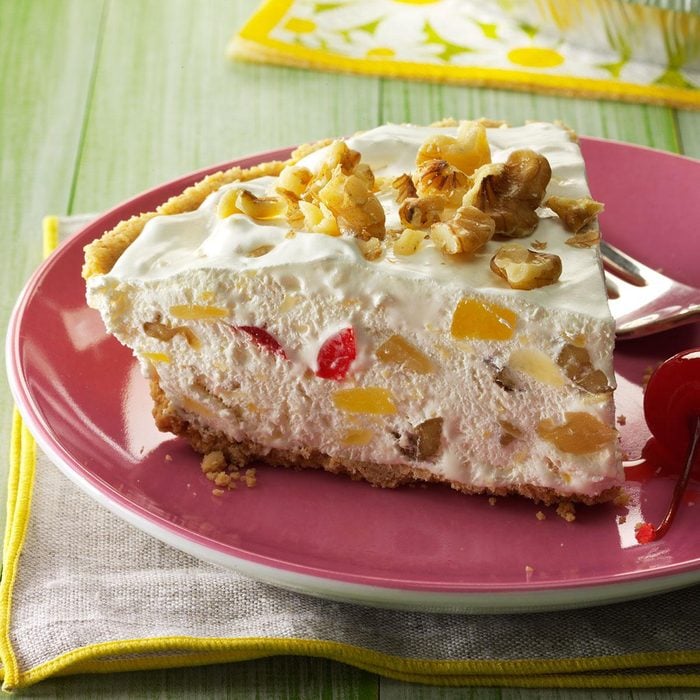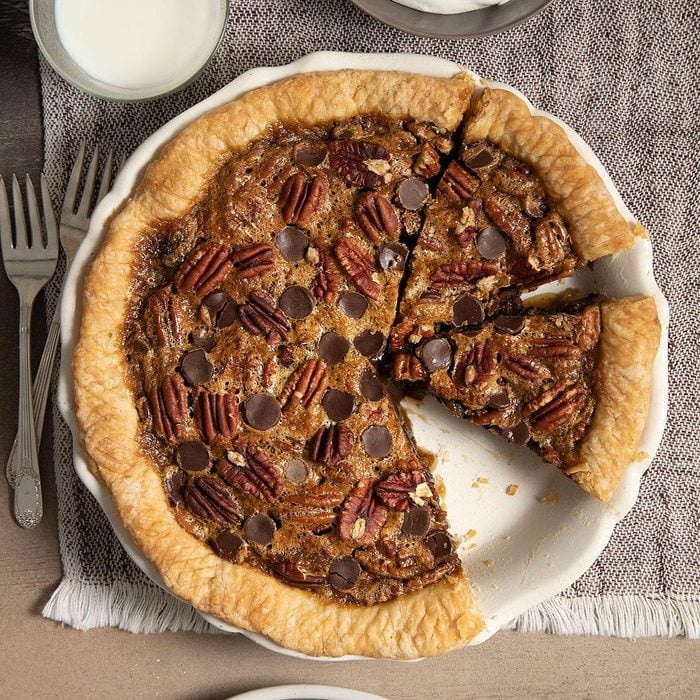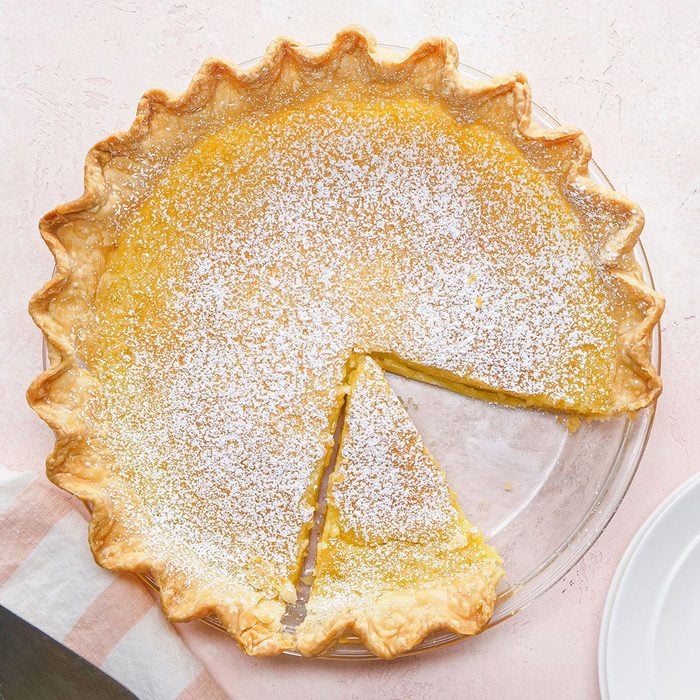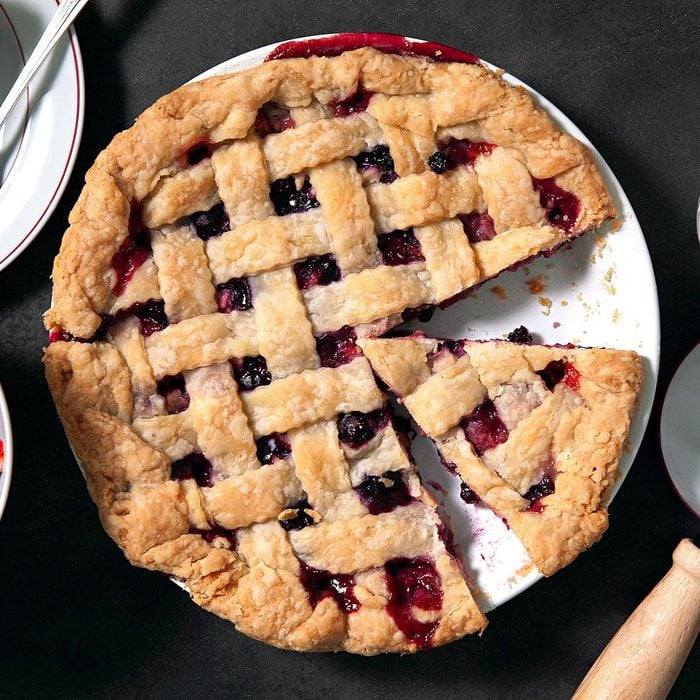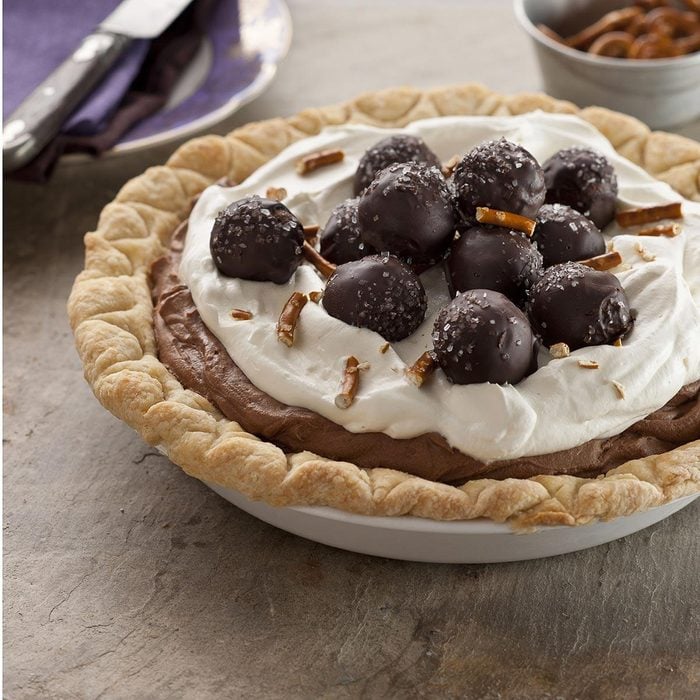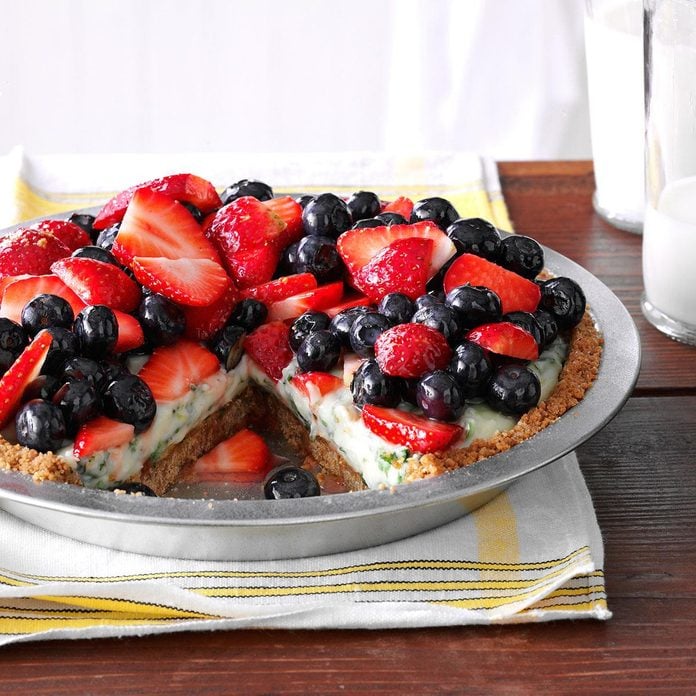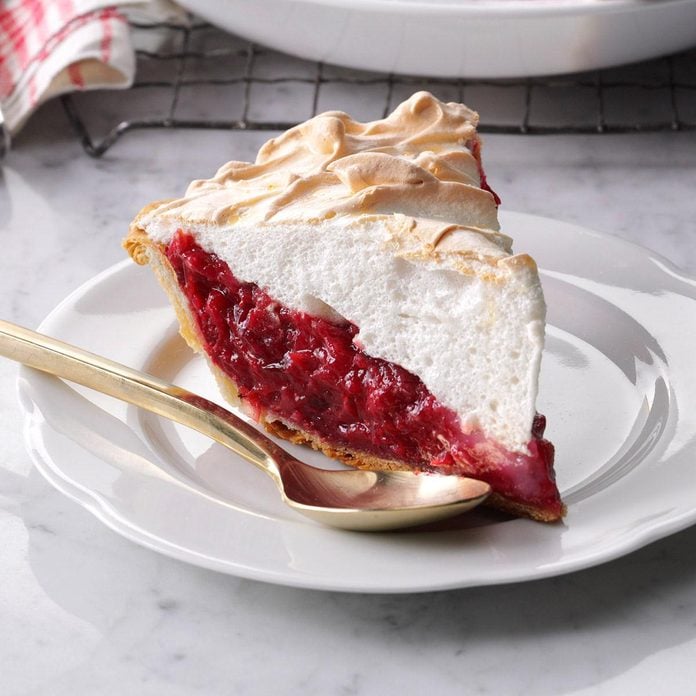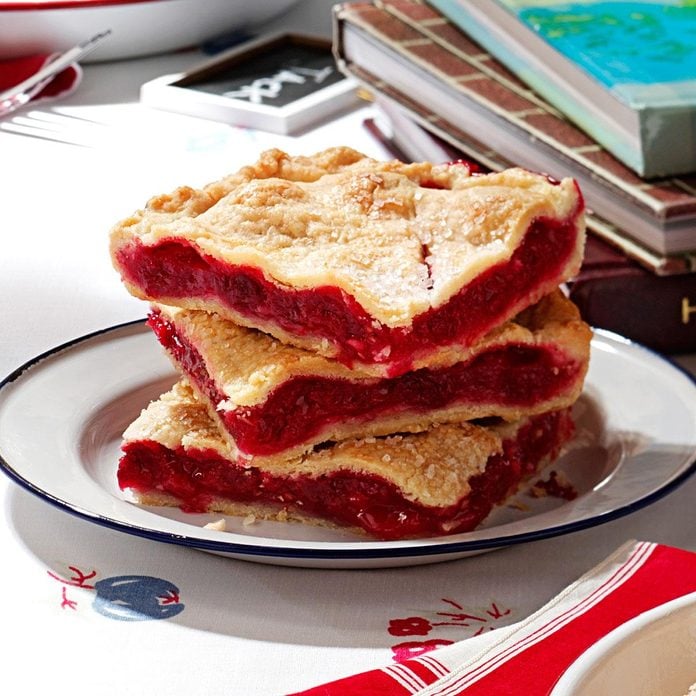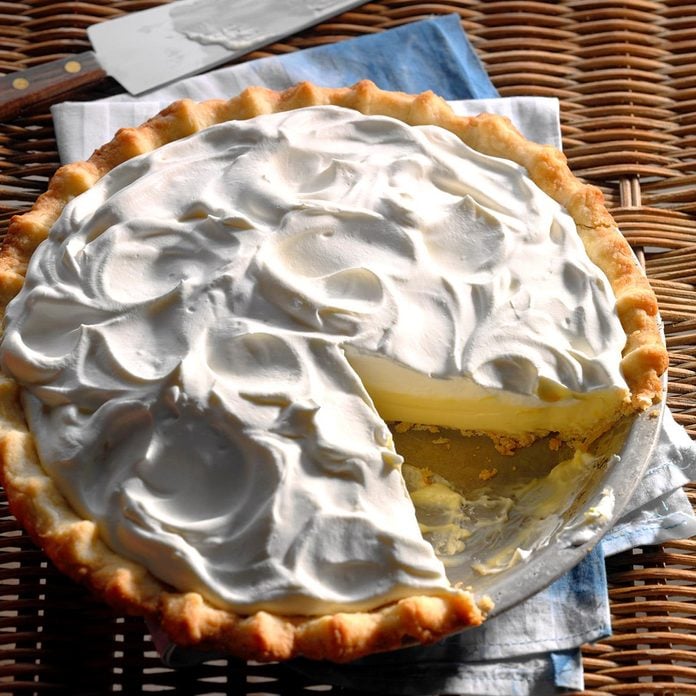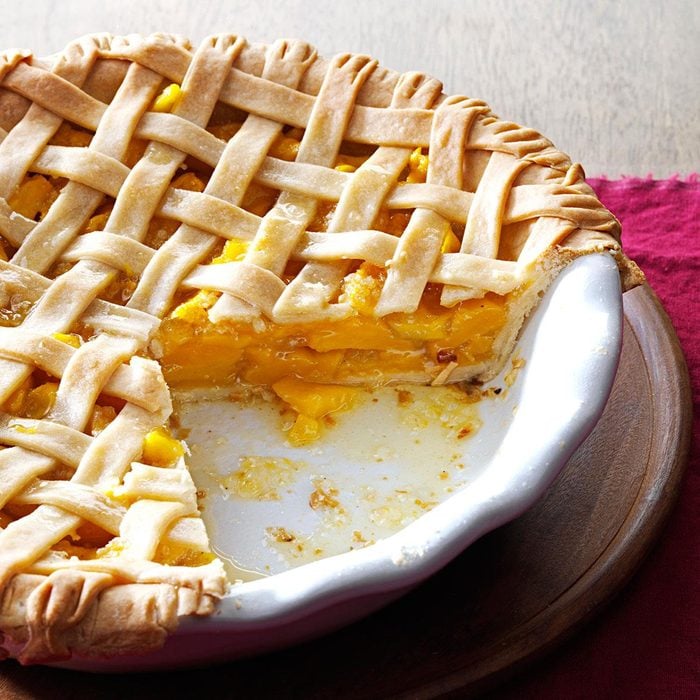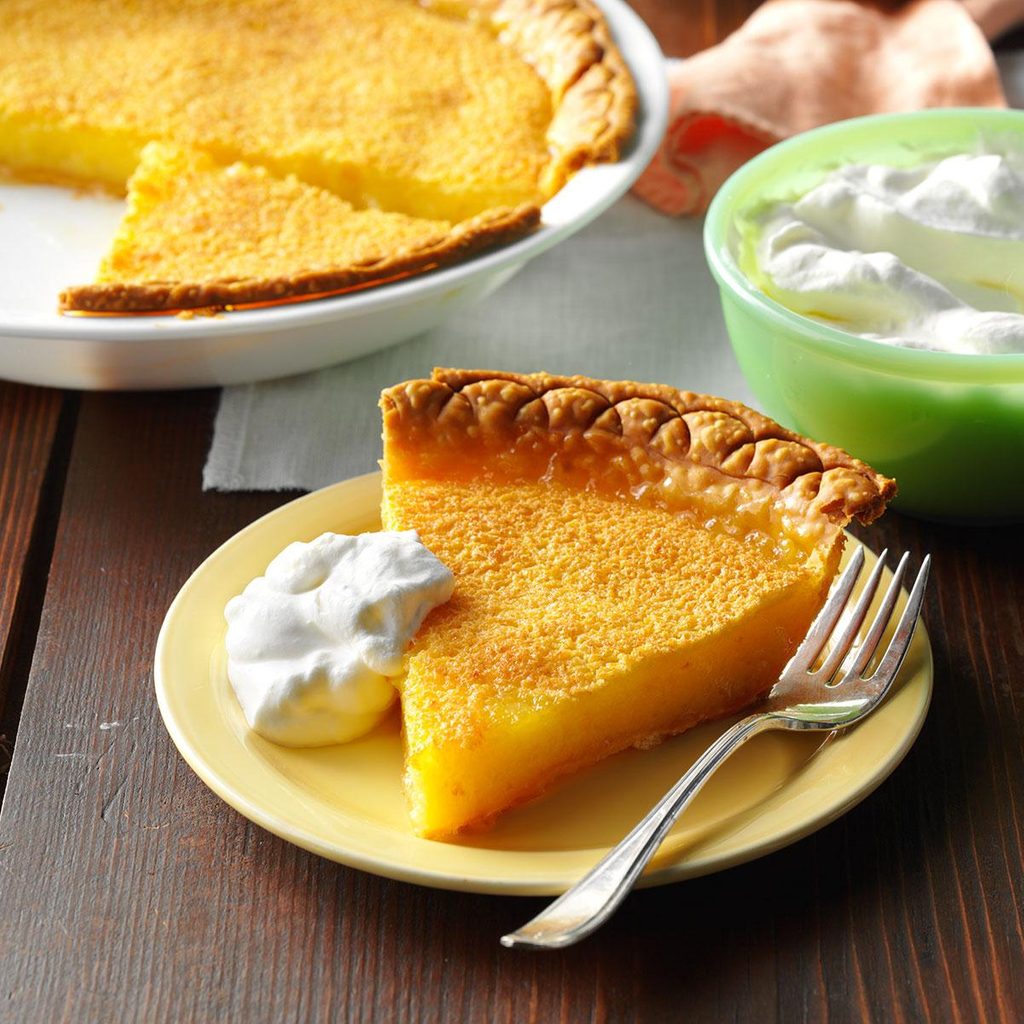Ever come across recipe directions telling you to bind bake pie crust? If you’ve ever made some of my personal favorite recipes like this Silky Chocolate Pie or Easy Fresh Strawberry Pie, you certainly have seen this phrase before.
So what is blind baking? How do you do it? Let’s get into it!
What is blind baking?
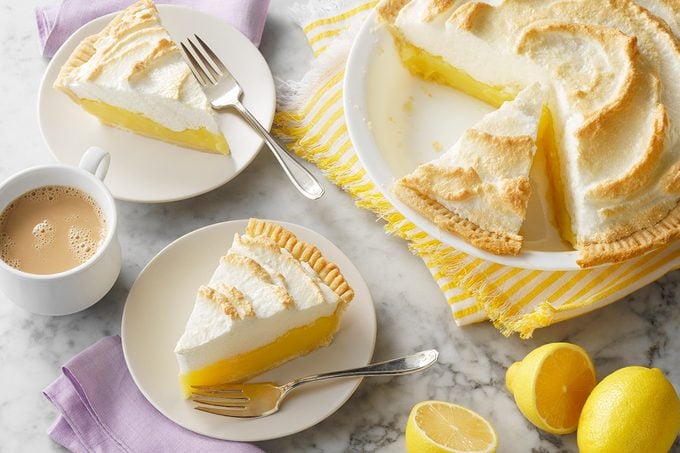 TMB Studio
TMB Studio
Blind baking (sometimes called prebaking) means partially or fully baking a pie or tart crust before adding filling. This ensures the crust is fully baked so you don’t end up with a soggy bottom.
Why blind bake a pie crust?
You need to blind bake pie crust when you’re making a pie with an uncooked filling or a filling that’s made on the stovetop (like lemon meringue pie). With a fully baked and cooled crust, you can confidently finish your cream pies, pudding pies and more.
Some recipes, like quiche and baked custard pies, may require a partially blind-baked crust. Giving the crust a head start in the oven ensures that the base of the pie is fully baked without overcooking the filling.
Partially Blind Baked vs. Fully Blind Baked
As you bake more pies, you’ll find that most recipes that call for blind baked crusts call for the crust to be fully prebaked. Some recipes, though, call for the crust to be partially baked before filling.
This partial blind bake is necessary with recipes where the filling cooks much more quickly than the crust. You’ll see this step with some quiche recipes and many custard pies.
Pie Weights vs. Docking
You’ll notice that some recipes may mention docking or pricking the pie crust with a fork instead of using weights. This technique is meant to keep the pie crust from puffing up while baking. To find out if this method works and when you should use it, I chatted with one of our Test Kitchen experts, Peggy Woodward.
Peggy explains that docking is a shortcut for blind baking and one she’d only recommend when you’re making pie with a very thick filling that won’t permeate these pinholes, like French silk pie.
She says that docking can be troublesome: “There’s a good chance that the filling will seep through the holes and cook up between the crust and the pie plate making a soggy crust.”
Instead of docking, Peggy recommends using pie weights or dried beans to weigh down your crust during pie baking. The weights allow the crust to bake evenly without bubbling up.
How to Blind Bake Pie Crust
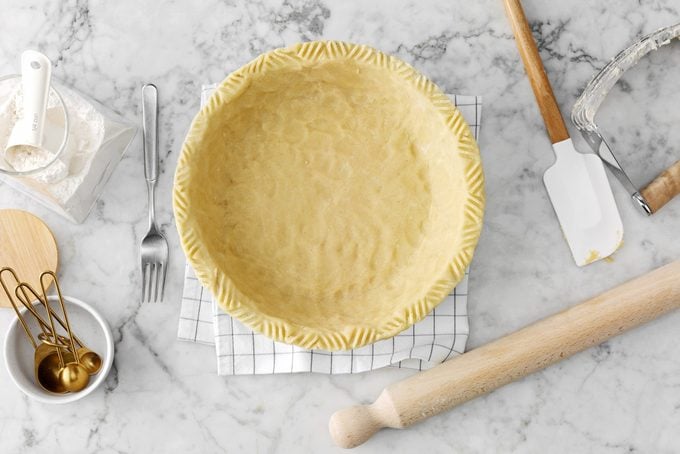 TMB Studio
TMB Studio
Step 1: Make (or buy) your go-to pie pastry
Before you bake, prep your favorite pie crust. This pastry can be store-bought, a classic butter pie crust or a favorite recipe from grandma’s recipe box.
Step 2: Roll out the pie pastry and chill
Next, roll out your chilled pie dough and fit it into your pie pan. Crimp or finish the edges however you see fit. Once finished, return the crust to the fridge to chill for another 30 minutes or more.
Step 3: Add the weights
Next, cover the pie crust with a sheet of parchment (this lining will make it easier to remove the weights later) and fill with weights. You can use ceramic pie weights, a pie chain, dry beans or uncooked rice. These will help prevent the crust from puffing up as it bakes.
Editor’s Tip: If you use beans, rice or another grain to weigh down your pastry, don’t cook these later. I stash dried beans in a Mason jar in my pantry to reuse blind bake after blind bake.
Step 4: Bake
Next, bake your pie crust according to the recipe’s instructions. Most pie recipes will direct you to remove the weights partway through baking. This will allow the bottom crust to brown a bit and crisp up further.
Once golden brown, remove from the oven and let cool.
Blind Baking Pie Crust FAQ
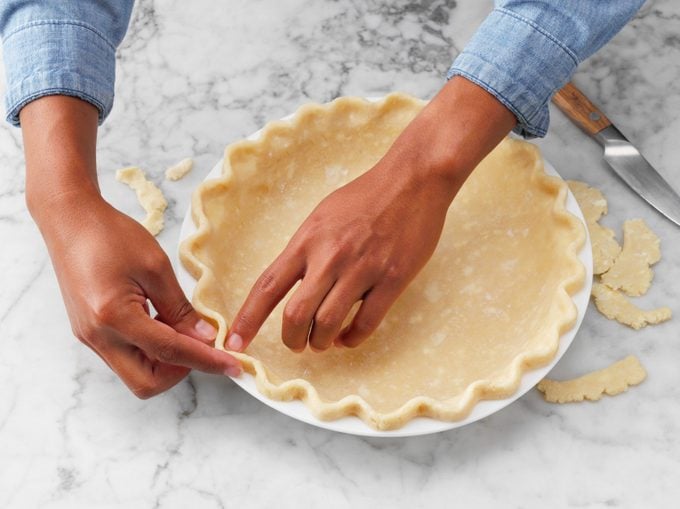 TMB Studio
TMB Studio
Can you blind bake premade pie crust?
Yes, you can absolutely blind bake a premade pie crust. To do this, follow the exact same steps as you would with a homemade pie crust.
Do you chill pie crust before blind baking?
For best results, chill your pie crust for 30 minutes (or more) after you’ve rolled it out and fitted it to the pan. This step helps to solidify the fats for a flakier end result. This will also prevent the crust from shrinking or slipping down the sides of the pie plate as it bakes.
How do you prevent pie crust from shrinking?
According to Peggy, the best way to prevent your pie crust from shrinking is by chilling it. First, chill the dough after making it but before rolling it out. Then chill it again after you’ve rolled it out and placed it in the pan. Chilling will help keep everything in place.
Also, make sure you use pie weights to keep your pie crust from shrinking. The weights will keep everything in place as the crust bakes.
Can you blind bake frozen pie crust?
You bet you can blind bake frozen pie crust! Pie pastry can go from freezer to oven—provided the crust is in a metal dish. Ceramic and glass dishes are prone to cracking when moved from cold temps to a very hot oven, so don’t use them in this circumstance.
Time to Bake Pie!
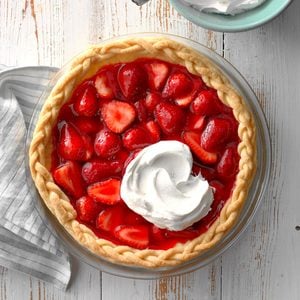 Taste of Home
Taste of Home
For my mother's birthday, I made this strawberry pie recipe instead of a cake. Since it was mid-May in Oklahoma, the berries were absolutely perfect. It was a memorable occasion for the whole family. —Josh Carter, Birmingham, Alabama
Also, check out these best
Christmas pies for your sweet holiday season!
Go to Recipe
French Silk PieI first made French silk pie when I was in high school. Years later, I tinkered with the recipe until I was happy with it. Now it’s one of my husband's favorites. —Lisa Francis, Elba, Alabama
Golden Apple PiePies are the dessert I like best to prepare. This one's the favorite for family get-togethers, and it has been awarded blue ribbons at a couple of local fairs. —Theresa Brazil, Petaluma, California
Check out how this
soft pretzel pie crust transforms apple pie!
Texas Pecan PieI won a blue ribbon for this pie at the Texas State Fair. Since I was in the military for more than 20 years, I didn’t really start cooking until after I retired. Now I enjoy spending my time in the kitchen. —Michelle Shockley, Wichita, Kansas
Easy Coconut Cream PieThis coconut cream pie has been a favorite dessert for decades. I even made several of these pies to serve a threshing crew of 21 men! —Vera Moffitt, Oskaloosa, Kansas
Fresh Cherry PieIf you're looking to learn how to make a cherry pie, this recipe is the place to start. This ruby-red cherry pie is just sweet enough, with a hint of almond flavor and a good level of cinnamon. The cherries peeking out of the lattice crust makes it so pretty, too. I like to make a few of these cherry pies throughout the summer. —Josie Bochek, Sturgeon Bay, Wisconsin
Get that homemade taste in a fraction of the time. Learn
how to make canned cherry pie filling taste better with a handful of not-so-secret tricks.
Creamy Chocolate-Banana PieYou can make almost any dessert more awesome with chocolate. In this cream pie, fresh banana and chocolate make a truly irresistible combo.
—Diane Nemitz, Ludington, Michigan
Citrus Cranberry PieTo showcase abundant fall cranberries, make this beautiful lattice-topped cranberry pie. A dollop of orange cream complements the slightly tart flavor. —Taste of Home Test Kitchen
Classic Pumpkin PieNothing says Thanksgiving like a slice of pie. And you can relish every luscious bite of this pumpkin pie recipe since the tender crust is made with canola oil and a mere hint of butter. —Taste of Home Test Kitchen
Berry-Apple-Rhubarb PieI make this family favorite every year for a gathering at my sister's, where the recipe is known as "Uncle Mike's pie." I use only fresh berries, apples and rhubarb that I grow myself. —Michael Powers, New Baltimore, Virginia
Creamy Hazelnut PieI've always been a big fan of peanut butter. Then I found chocolaty Nutella hazelnut spread and I was hooked! I even changed one of my all-time favorite
pie recipes by substituting that ingredient. —Lisa Varner, El Paso, Texas
Macaroon Cherry PieI use homegrown cherries in this bountiful pie with its unique crunchy coconut topping. But I've found that purchased tart cherries yield a dessert that's nearly as delicious. I always bake this pie around Presidents Day or Valentine's Day, but it's popular with my family in any season. —Lori Daniels, Beverly, West Virginia
Classic Sweet Potato PieThis simple but special deep-dish pie provides a down-home finish to hearty autumn meals. Pecans and pumpkin pie spices make this a comforting seasonal classic. —Paul Azzone, Shoreham, New York
Caramel Apple Pie with Streusel ToppingI developed this recipe through the years to get it exactly where we want it. I've entered several pie contests with it and placed first each time—one bite and you'll know why this pie's a winner! —Laurel Dalzell, Manteca, California
Cherry Hand PiesThere's nothing better than a sweet, from-scratch delight like traditional cherry pie. These precious little hand pies always go fast when I sell them at my pie bakery! —Allison Cebulla, Milwaukee, Wisconsin
Dark Chocolate-Caramel Macchiato PieOne of my first entries in the National Pie Championship was this impressive pie with coffee flavor and cool chocolate curls on top. —Amy Mills, Sebring, Florida
Blueberry Cream PieWhenever I ask my family which pie they'd like me to make, everyone gives the same answer - Blueberry Cream Pie! This refreshing dessert has an enticing cream layer topped with lots of plump blueberries.
—Kim Erickson, Sturgis, Michigan
Mixed Berry PieHere's a delightful way to enjoy summertime fruits. If you're short on one of the berries, just make up the amount with one of the other fruits in the pie. —Elaine Moody, Clever, Missouri
Winnie's Mini Rhubarb & Strawberry PiesEvery spring, we had strawberries and rhubarb on our farm outside Seattle. These fruity hand pies remind me of those times and of Grandma Winnie’s baking. —Shawn Carleton, San Diego, California
Key Lime Cream PieI am very proud of this luscious no-bake beauty. It's so cool and refreshing—perfect for any summer potluck or get-together. Wherever I take this pie, it quickly disappears, and everyone asks for the recipe. —Shirley Rickis, Lady Lake, Florida
Perfect Plum & Peach PieI created this recipe for in-season summer fruit. The plums give the pie a splash of color as well as flavor, and the crumb topping is both easy and excellent! —Rachel Johnson, Shippensburg, Pennsylvania
Deep-Dish Apple PieThis deep-dish apple pie is a winner! The crust is so flaky and the filling is sure to please everyone. —Salem Cross Inn, West Brookfield, Massachusetts
Chocolate Cream PieOur teenage son, John, has done lots of 4-H baking. This old-fashioned chocolate cream pie recipe with a flaky crust was his favorite thing to make. —Mary Anderson, De Valls Bluff, Arkansas
Candy Cane PieWhen my college roommate first made this pie, I couldn't get enough! Using a store-bought crust helps save time when you're in the midst of the holidays. —Charlotte Stewart, Mesa, Arizona
Sour Cherry PieWhenever my mom is invited to a party or potluck, everyone requests her homemade double-crust fruit pies. In the summer, she uses fresh tart cherries for this recipe. I love a slice topped with vanilla ice cream. —Pamela Eaton, Monclova, Ohio
Cranberry Walnut PieHere’s a wonderful dessert for Christmas or Thanksgiving. With ruby-red color and a golden lattice crust, this pie looks as good as it tastes. —Diane Everett, Dunkirk, New York
This
double pie crust recipe is perfect for this walnut pie.
Chocolate Cream PieOur teenage son, John, has done lots of 4-H baking. This old-fashioned chocolate cream pie recipe with a flaky crust was his favorite thing to make. —Mary Anderson, De Valls Bluff, Arkansas
Favorite Banana Cream PieHomemade banana cream pie is my mom’s specialty, and this dreamy dessert has a wonderful banana flavor. It looks so pretty, and it cuts easily too. —Jodi Grable, Springfield, Missouri
Cranberry-Almond Apple PieMy grandmother made this treat every year for Christmas. It’s much better than everyday apple pie. The recipe is a family treasure. —Maxine Theriauit, Nashua, New Hampshire
Apple Crumble PieThe crumb topping of this apple crumble pie recipe is awesome, which may explain why dessert always disappears fast. Or maybe it's the chunky apple filling. Either way, it's a family tradition. —Vera Brouwer, Maurice, Iowa
Nutella Hand PiesThese pint-sized Nutella hand pies made with puff pastry are too good to keep to yourself! —Taste of Home Test Kitchen
Southern Bourbon Pecan PieWhen I first made the original recipe for this bourbon-splashed pie, I added some vanilla extract and eliminated the flour. We loved the result. —Paul Falduto, Efland, North Carolina
Sugar Cream PieI absolutely love Indiana sugar cream pie; especially the one that my grandma made for me. Here, we serve it warm or chilled and call it "Hoosier" sugar cream pie. —Laura Kipper, Westfield, Indiana
Rhubarb Cherry PieAs a young girl, I dreamed of being able to make pies like my mother. Her rolling pin, which I inherited, is 2 feet long and 8 inches wide! In fact, this is Mom's recipe, although I substituted cherries for the strawberries in her version. I first made this pie for a church gathering 20 years ago, and everyone's looked for it at every potluck since! —Eunice Hurt, Murfreesboro, Tennessee
Spiced Butternut Squash PieMy mom always made this dessert with her homegrown squash. It was my dad's favorite after-dinner treat. I continue to make it to this day. —Johnna Poulson, Celebration, Florida.
Frozen Banana Split PieThis dessert is special enough to make hamburgers and fries a meal to remember! It's so tall and pretty and just like eating a frozen banana split. Make it ahead to save time. —Joy Collins, Birmingham, Alabama
Peach Crumble PieA delightful summertime pie, this dessert is overflowing with fresh peach flavor. Each sweet slice is packed with old-fashioned appeal. The streusel topping makes this peach crumble pie a little different than the ordinary and adds homemade flair. —Sally Holbrook, Pasadena, California
Fluffy Key Lime PieFor a taste of paradise, try this no-bake Key lime pie recipe. It's low in fat, sugar and fuss. It truly is the best Key lime pie recipe ever! —Frances VanFossan, Warren, Michigan
Shoofly PieMy grandmother made the best shoofly pie in the tradition of the Pennsylvania Dutch. Shoofly pie is to the Pennsylvania Dutch as pecan pie is to a Southerner. —Mark Morgan, Waterford, Wisconsin
Peanut Butter Cream PieDuring the warm months, it's nice to have this fluffy, no-bake peanut butter pie that's a snap to make. Packed with flavor, this pie gets gobbled up even after a big meal! —Jesse & Anne Foust, Bluefield, West Virginia
Granny's Rhubarb PieThis recipe originated with my grandmother, who baked many different rhubarb desserts. This was always a favorite of mine. —Blanche Baninski Minto North Dakota
Eggnog PieEven better than holiday eggnog in a glass is eggnog on a plate! This creamy pie delivers all that rich, wonderful flavor. It’s pretty, too, with a sprinkling of nutmeg on top. —Florence Shaw, East Wenatchee, Washington
We love this
butter pie crust as the base for this eggnog pie.
Contest-Winning Fresh Blueberry PieI've been making this blueberry pie recipe for decades since the ingredients for the filling are readily available in Michigan. Nothing says summer like a piece of fresh blueberry pie! —Linda Kernan, Mason, Michigan
World's Best Lemon PieMother's pies were always so memorable, with tender, flaky crusts. In summer the order of the day was lemon meringue! —Phyllis Kirsling, Junction City, Wisconsin
Marshmallow-Almond Key Lime PieSummer is peak season for Key limes—a must for this pie’s distinctive sweet-tart flavor. Unlike other Key lime pies, mine has a smooth marshmallow layer on top. This makes it stand out as a crowd favorite. —Judy Castranova, New Bern, North Carolina
Praline Pumpkin Pecan PieMy husband and I are not big fans of traditional pumpkin pie, but my mother and others are, so we must have pumpkin pie as one of the desserts at Thanksgiving. I decided to meet everyone halfway with this pumpkin pecan pie recipe and it was a hit. Now I bring it to Thanksgiving every year. My mother doesn't even feel the need to bake her own pumpkin pie! —Emily Reese, Glade Hill, Virginia
Hungry for more? Here’s our collection of the best
pecan pie recipes.
Coconut PieWatching my mother cook from scratch, I hardly knew that anything was available "pre-made" until I'd left home. One of Mom's best desserts is her creamy old-fashioned coconut pie. A rich slice is true comfort food. —Mary McGuire, Graham, North Carolina
Chocolate Cherry PieAssures Maxine Smith of Owanka, South Dakota. "This rich and creamy pie is sure to please any dyed-in-the-wool chocoholic!"
Apple PieI remember coming home sullen one day because we'd lost a softball game. Grandma, in her wisdom, suggested that maybe a slice of hot apple pie would make me feel better. She was right. —Maggie Greene, Granite Falls, Washington
Easy Cream PieFresh berries and cream pie—it’s a simple, classic combination just like Grandma used to make. My version gets you out of the kitchen and into your lounge chair quickly. Enjoy! —Gina Nistico, Taste of Home Food Editor
Grandma's Sour Cream Raisin PieThe aroma of this pie baking in my farm kitchen oven reminds me of my dear grandma, who made this pretty pie for special occasions. —Beverly Medalen, Willow City, North Dakota
Swedish Apple PieThis decadent Swedish apple pie serves up homemade flavor in every bite. This is a perfect snack with coffee or as an after-dinner treat. —Sarah Klier, Grand Rapids, Michigan
Easy Strawberry Lemonade Freezer PieThree simple ingredients mixed together and spread into a graham cracker crust make magic while your freezer does all the work. Prep this pie ahead and freeze it overnight or even longer. Feel free to vary the fruit if you'd like! —Debbie Glasscock, Conway, Arkansas
Contest-Winning Fresh Blueberry PieI've been making this blueberry pie recipe for decades since the ingredients for the filling are readily available in Michigan. Nothing says summer like a piece of fresh blueberry pie! —Linda Kernan, Mason, Michigan
Creamy Pineapple PieCreamy pineapple pie is a light and refreshing dessert that's quick to make and impressive to serve. This is one of our favorite ways to complete a summer meal. —Sharon Bickett, Chester, South Carolina
Traditional Pumpkin PieUsually I prepare two different desserts for our holiday dinner, but one of them
must be pumpkin pie—otherwise, it just wouldn't seem like Thanksgiving. My version calls for more eggs than most, making this pie's custard filling especially rich. —Gloria Warczak, Cedarburg, Wisconsin
Creamy Coffee PieIt’s easy to stir mini marshmallows, mini chocolate chips and crushed sandwich cookies into coffee ice cream to create this irresistible frozen dessert. —Cherron Nagel, Columbus, Ohio
Cranberry Apple PieNew England is one of the prime apple- and cranberry-growing regions of the country. This is my all-time favorite cranberry apple pie recipe.
Mom's Custard PieJust a single bite of this traditional custard pie takes me back to the days when Mom would fix this pie for Dad, Grandfather and me. Mom also regularly prepared pies for large gatherings. This dessert was often requested. —Barbara Hyatt, Folsom, California
Contest-Winning Raspberry Cream PieThis recipe is delicious with either fresh-picked or frozen raspberries. That means you can make it year-round. One bite of raspberry pie will instantly turn winter to summer. —Julie Price, Nashville, Tennessee
Easy Peanut Butter & Pretzel PieMy crispy, salty pretzel crust just begs for a creamy no-bake peanut butter filling and a layer of chocolate ganache. — Gina Nistico, Taste of Home Food Editor
Apple Slab PieApple slab pie is a terrific contribution to a covered-dish supper, picnic or potluck. It’s baked in a large 15x10 baking pan so it’s easy to make and tote, too. But be prepared—people always ask for a copy of the recipe! —Dolores Skrout, Summerhill, Pennsylvania
Spiced Plum PieThe subtle tastes of orange and nutmeg bring out the fresh flavor of plums in this comforting pie. Be sure to have a slice while it's still warm, with a scoop of vanilla ice cream. —Lucille Mead, Ilion, New York
Limoncello Cream PieAfter a big Christmas dinner, we love the cool refreshment of a frozen lemon pie. Limoncello brings a little sophistication to each smooth, creamy slice. —Jessie Grearson-Sapat, Falmouth, Maine
Red, White and Blueberry PieThis creamy pie gets dressed up with berries to make a showstopping display at any Fourth of July party or summer get-together. It's as pretty as it is tasty! —Kimberly McFarland, Broken Arrow, Oklahoma
Peanut Butter Cream PieDuring the warm months, it's nice to have this fluffy, no-bake peanut butter pie that's a snap to make. Packed with flavor, this pie gets gobbled up even after a big meal! —Jesse & Anne Foust, Bluefield, West Virginia
Easy Confetti PieSugar cone crust makes a pie that tastes like birthday cake when you add a dreamy, creamy no-bake confetti filling. —
Taste of Home Test Kitchen
Key Lime PieWe created this refreshing mini pie with a homemade crumb crust and a pudding-like lime filling. If you can’t find Key lime juice, regular lime juice works just fine. —Taste of Home Test Kitchen
Southern Bourbon Pecan PieWhen I first made the original recipe for this bourbon-splashed pie, I added some vanilla extract and eliminated the flour. We loved the result. —Paul Falduto, Efland, North Carolina
Old-Fashioned Banana Cream PieThis old-fashioned banana cream pie recipe is full of flavor. Because it uses instant pudding, this no-bake dessert is ready in just minutes. —Perlene Hoekema, Lynden, Washington
Butterscotch PieThis pie's filling is like creamy pudding and is crowned with golden peaks of meringue. —Cary Letsche, Brandenton, Florida
Cherry Almond Mousse PieTreat your loved ones to a luscious pie with chocolate, cherries and nuts in a creamy vanilla mousse. It's a sweet yet refreshing dessert. —Dorothy Pritchett, Wills Point, Texas
Peach PieI acquired this delicious peach pie filling recipe some 40 years ago, when my husband and I first moved to southern Iowa and had peach trees growing in our backyard. It's been a family favorite since then and always brings back memories of both summer and those happy early years. — June Mueller, Sioux City, Iowa
Li'l Pecan PiesThese tempting little tarts have all the rich traditional taste of a full-size pecan pie in a much smaller package. The tarts are perfect for two. —Christine Boitos, Livonia, Michigan
Favorite Fresh Raspberry PieThis pretty raspberry pie was practically a staple at our house during the late summer. Our family had raspberry bushes, so we always have pie with fresh raspberry filling. —Emily Dennis, Hancock, Michigan
Pumpkin Gingersnap Ice Cream PieMy family and I always try new desserts during the holidays. This one was a clear winner, so we now make it for all occasions! —Patricia Ness, La Mesa, California
Contest-Winning Fresh Blueberry PieI've been making this blueberry pie recipe for decades since the ingredients for the filling are readily available in Michigan. Nothing says summer like a piece of fresh blueberry pie! —Linda Kernan, Mason, Michigan
Fresh Blackberry PieI grew up on a farm, and we always picked fruits in early summer and used them to make desserts. This blackberry pie recipe is a real stunner. —Gladys Gibbs, Brush Creek, Tennessee
Buckeye PieEveryone who eats this pie raves about it! You can cover the whole top with ganache, but leaving part of the filling bare is the traditional way to make it. —Mary Northrup, Alpine, New York
Homemade Pear PieI entered this pie in a local baking contest and ended up winning! Bartlett pears hold up well when baked, adding a nice layer of texture. —Darlene Jacobson, Waterford, Wisconsin
Pumpkin Ice Cream PieAlthough it looks like you fussed, this pretty layered pie is easy to assemble with convenient canned pumpkin, store-bought candy bars and a prepared crust. "This make-ahead dessert is delicious any time of year," reports Suzanne McKinley of Lyons, Georgia.
Apple Cranberry Slab PieMy husband loves pie, so I made one with apples, raspberries and cranberries. It’s so good, I bend the rules and let the grandkids have it for breakfast. —Brenda Smith, Curran, Michigan
Frozen Hawaiian PieCool summer pies are one of Mom's specialties. This version offers pineapple, maraschino cherries and walnuts that are folded into a fluffy filling. It's an easy yet tempting no-bake dessert. —Jennifer Mcquillan, Jacksonville, Florida
Bourbon Chocolate Pecan PieWhen my fiance first made this chocolate bourbon pecan pie for me, I declared it to be the best pie ever! Creamy chocolate combines with crunchy nuts in a great, gooey filling. We can't get enough of this recipe inspired by Kentucky Derby bourbon chocolate pecan pie. —Tanya Taylor, Cary, North Carolina
Mixed Berry PieHere's a delightful way to enjoy summertime fruits. If you're short on one of the berries, just make up the amount with one of the other fruits in the pie. —Elaine Moody, Clever, Missouri
Lemon Chess PieThis bright and creamy lemon chess pie cuts beautifully and has a smooth texture. It’s one of my favorites. —Hannah LaRue Rider, East Point, Kentucky
Flaky Bumbleberry PieWhen you want to make an impression, make this pie! The recipe produces one of the flakiest crusts ever, and the combination of rhubarb and different berries in the filling is delicious. —Suzanne Alberts, Onalaska, Wisconsin
Sweet & Salty Truffle PieHomemade truffles—a little bit sweet and a little bit salty—will keep you coming back for more. Store extra truffles in the fridge.—Shirley Warren, Thiensville, Wisconsin
Creamy Lime Pie with Fresh BerriesI combined the tangy tastes of lime and cilantro with cream cheese for this unusual berry pie that showcases seasonal fruit. The ginger cookies add zip to the crust. —Anneliese Barz, Fort Mill, South Carolina
Peach PieI acquired this delicious peach pie filling recipe some 40 years ago, when my husband and I first moved to southern Iowa and had peach trees growing in our backyard. It's been a family favorite since then and always brings back memories of both summer and those happy early years. — June Mueller, Sioux City, Iowa
Mile-High Cranberry Meringue PieYour holiday crowd will be blown away when they see this pie with towering meringue on top. Let it sit in your refrigerator for at least four hours for best results. —Marcia Whitney, Gainesville, Florida
Raspberry Pie SquaresMaking pie for a crowd may seem impossible, but not when you turn to this crowd-pleasing recipe! The sweet-tart raspberry filling pairs well with a flaky homemade pastry. —Taste of Home Test Kitchen
Sour Cream-Lemon PieI first tasted this pie at a local restaurant and hunted around until I found a similar recipe—now it's my husband's favorite. —Martha Sorensen, Fallon, Nevada
Mango Pie with Coconut CrustThis was the first pie I created myself. Mangoes are one of my favorite fruits, and they deserve to be represented in a pie. Of course, everything is better with coconut. —Jennifer Worrell, Niles, Illinois
Loved this recipe? Next time, treat your taste buds to our
classic Mango pie.
Easy Lemon PieI’ve had this one-bowl lemon pie recipe for years. It’s my twist on chocolate French silk pie, and it's uber easy to do with refrigerated pie pastry. —Glenna Tooman, Boise, Idaho
